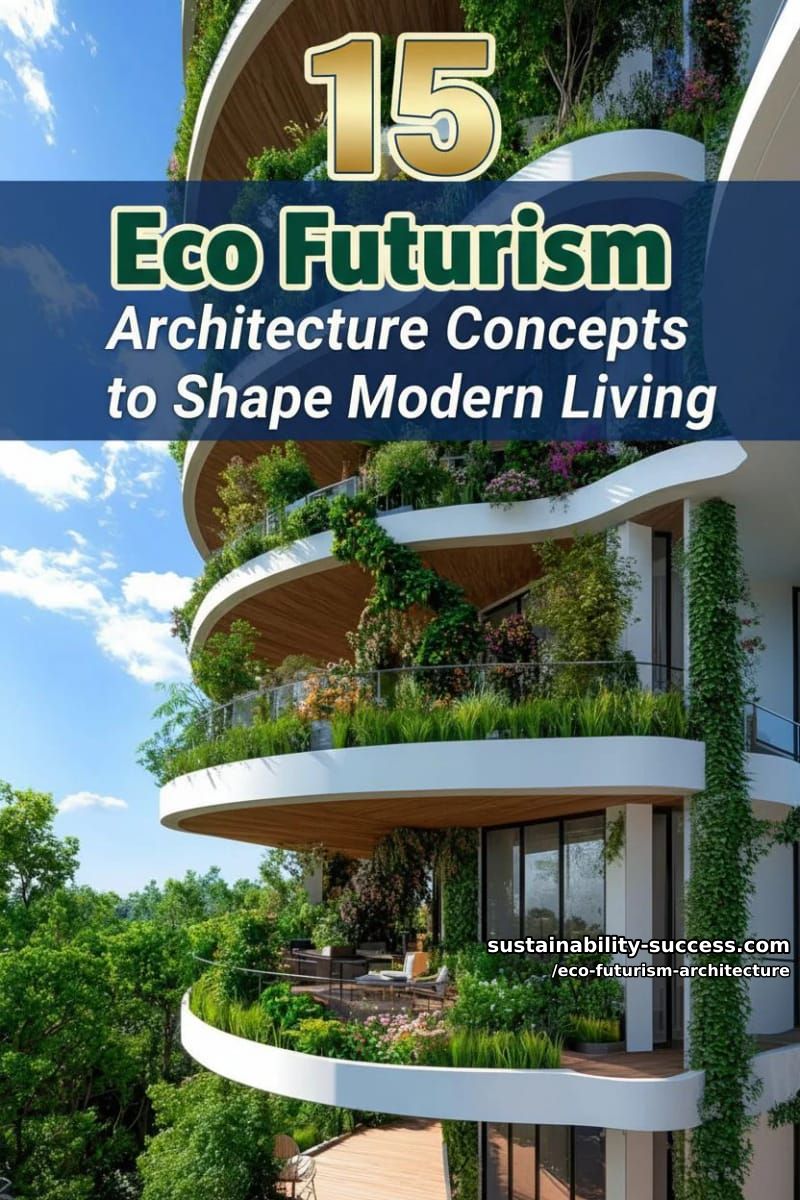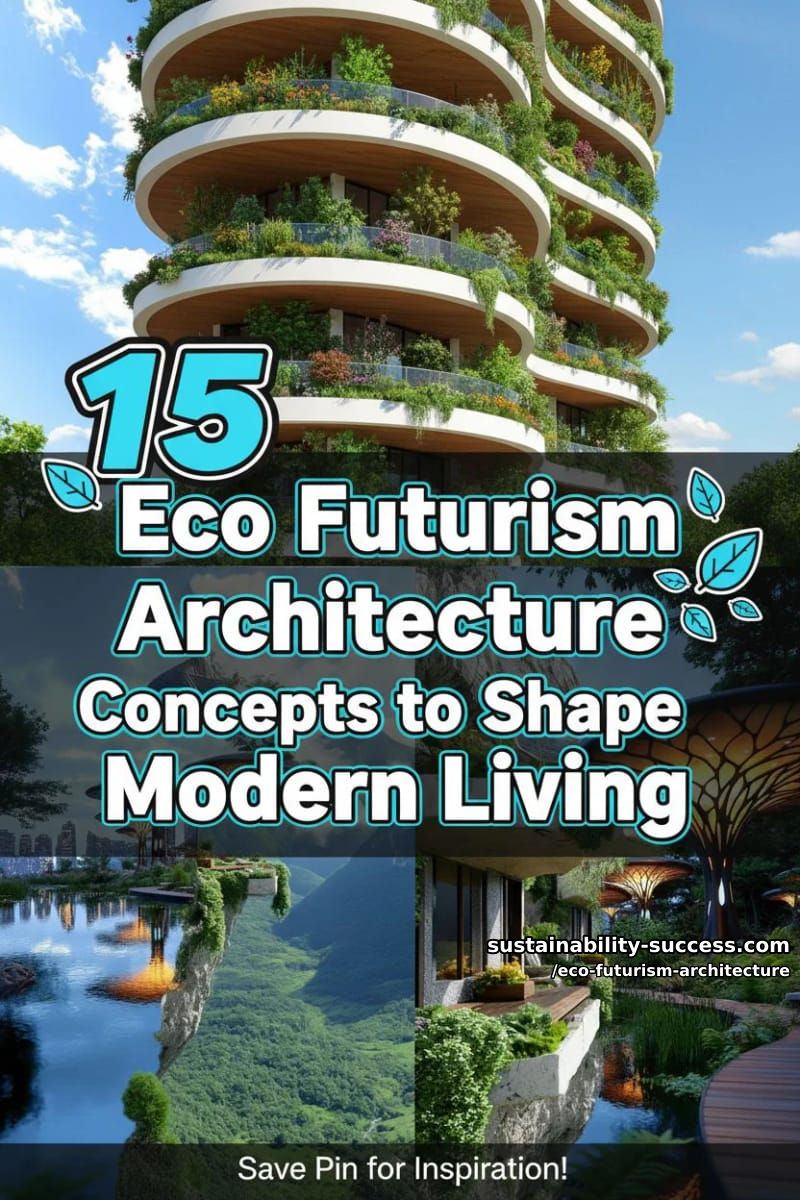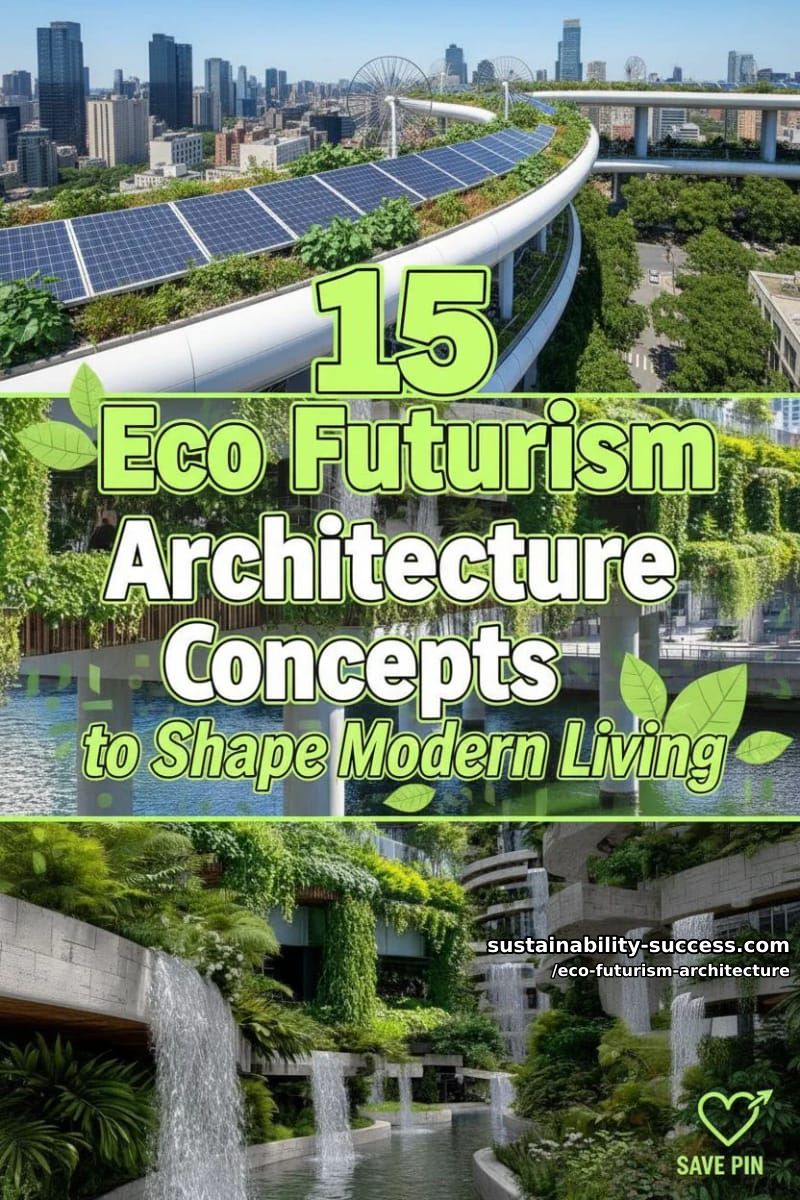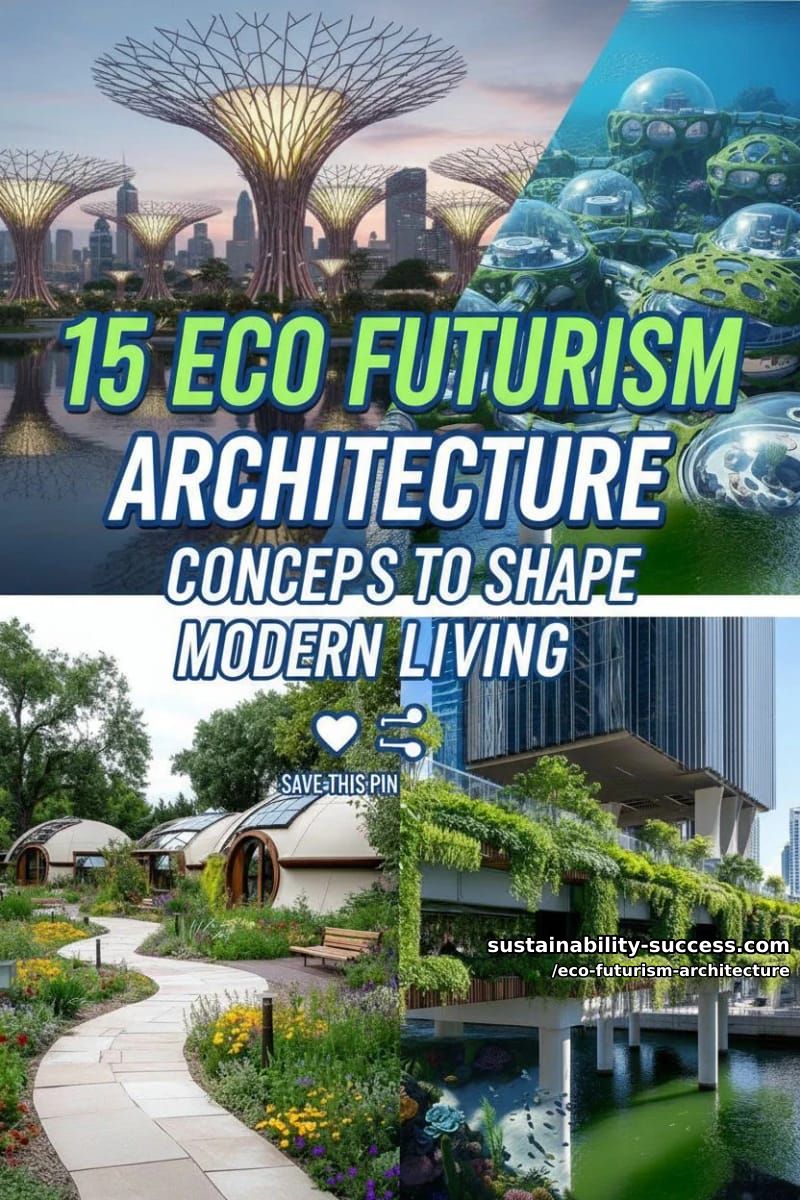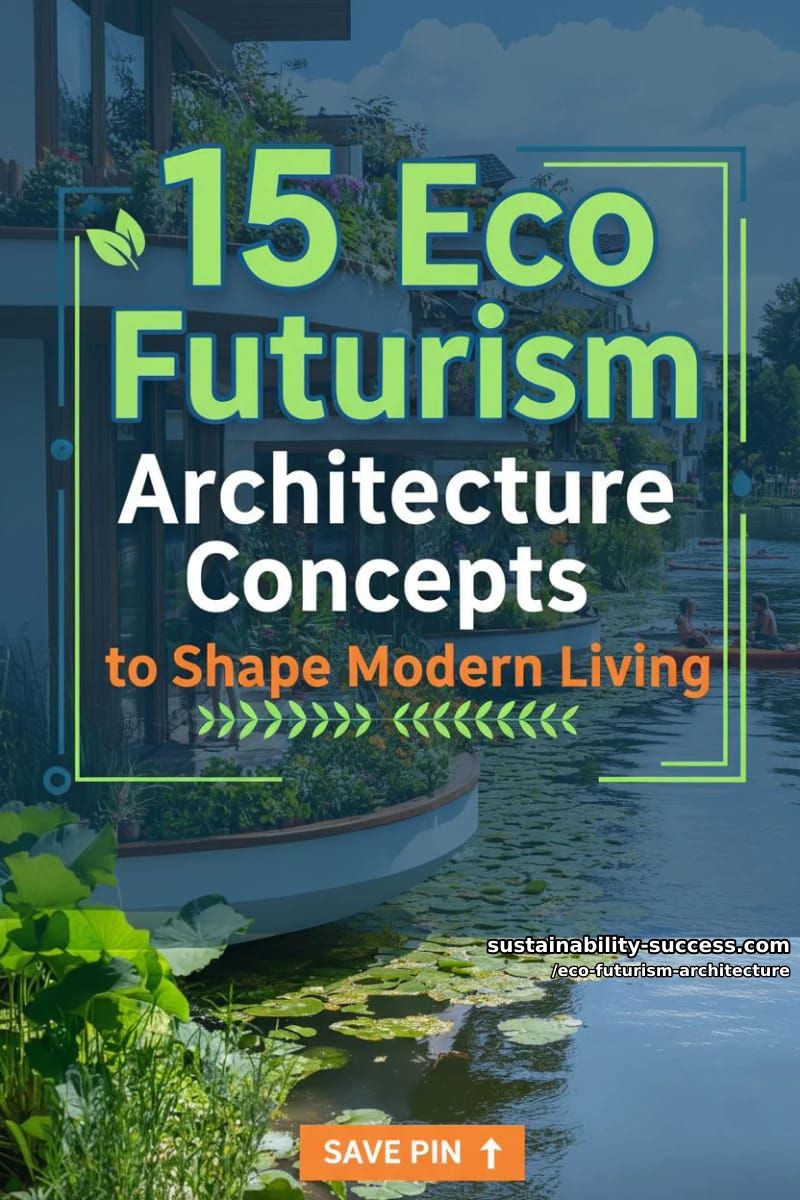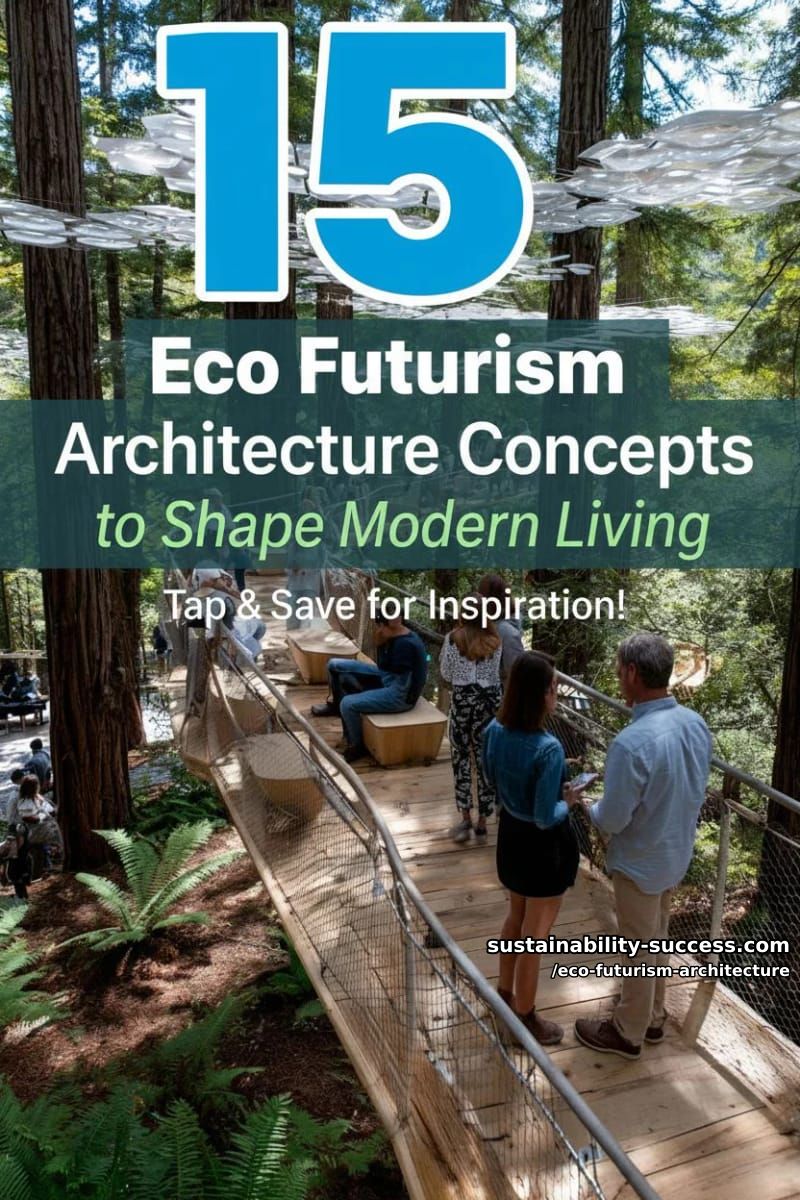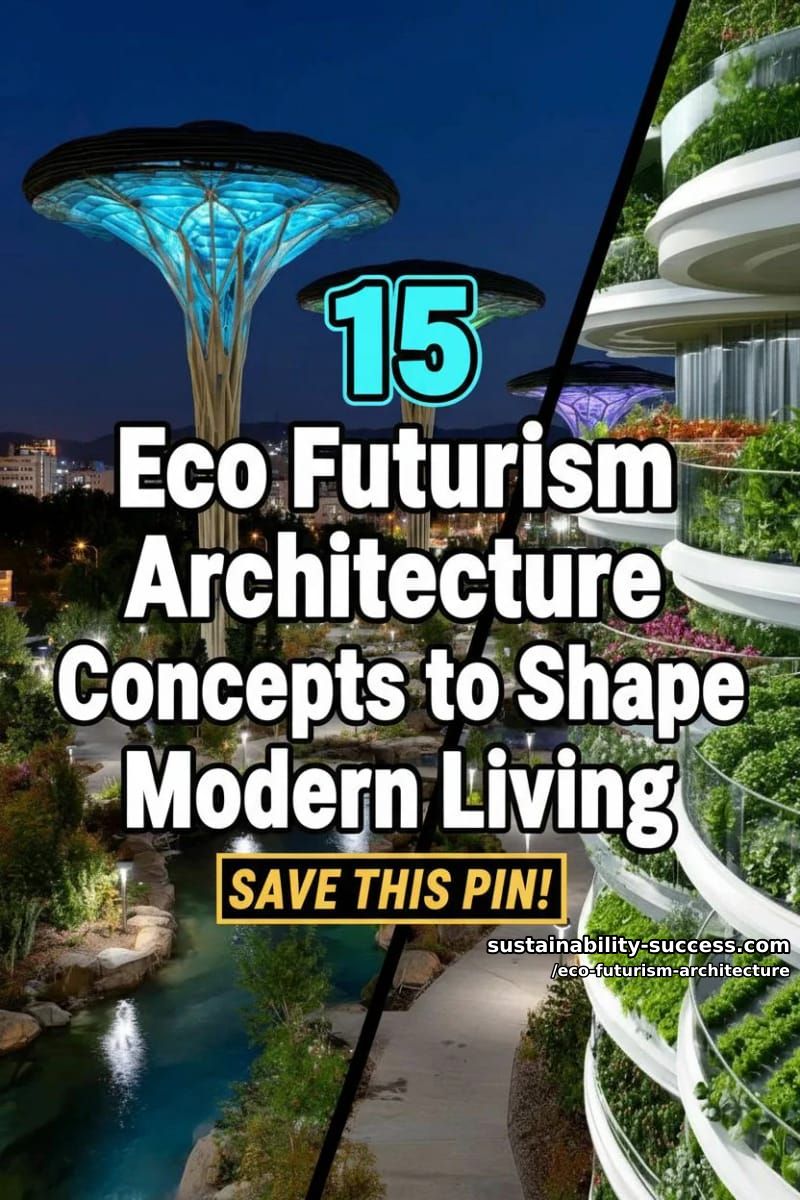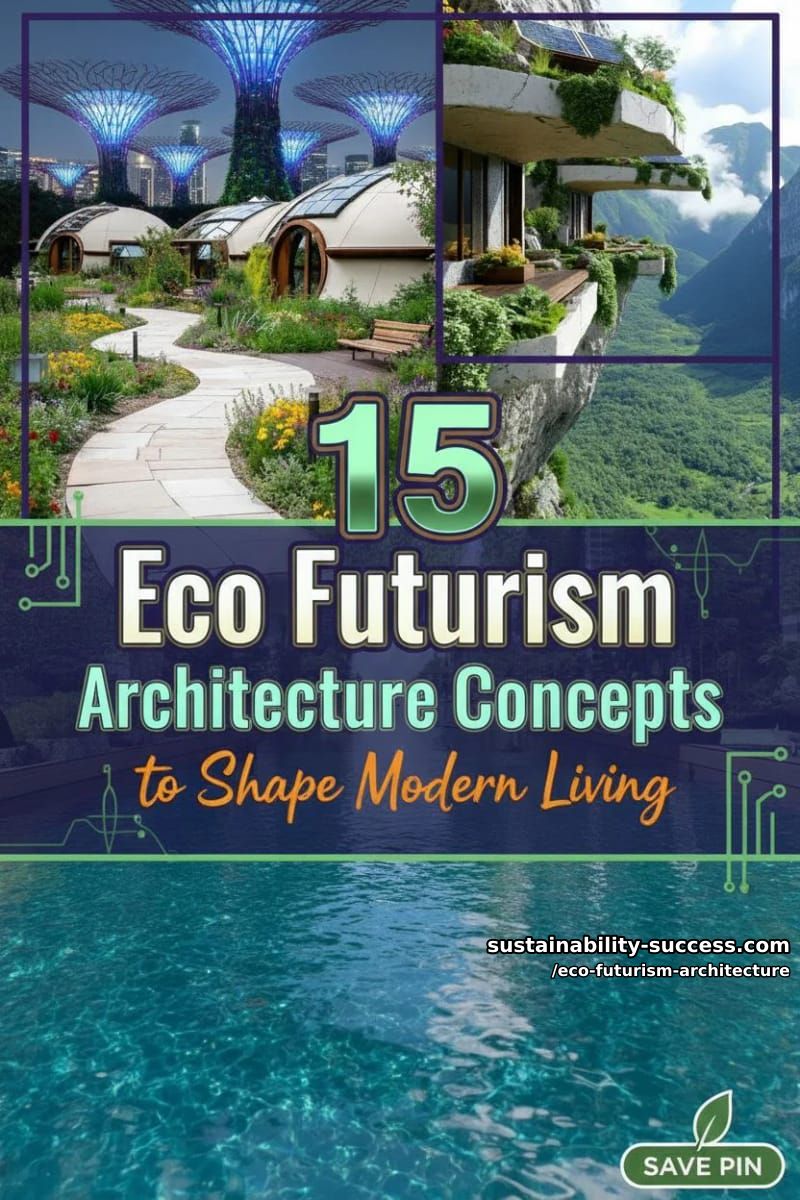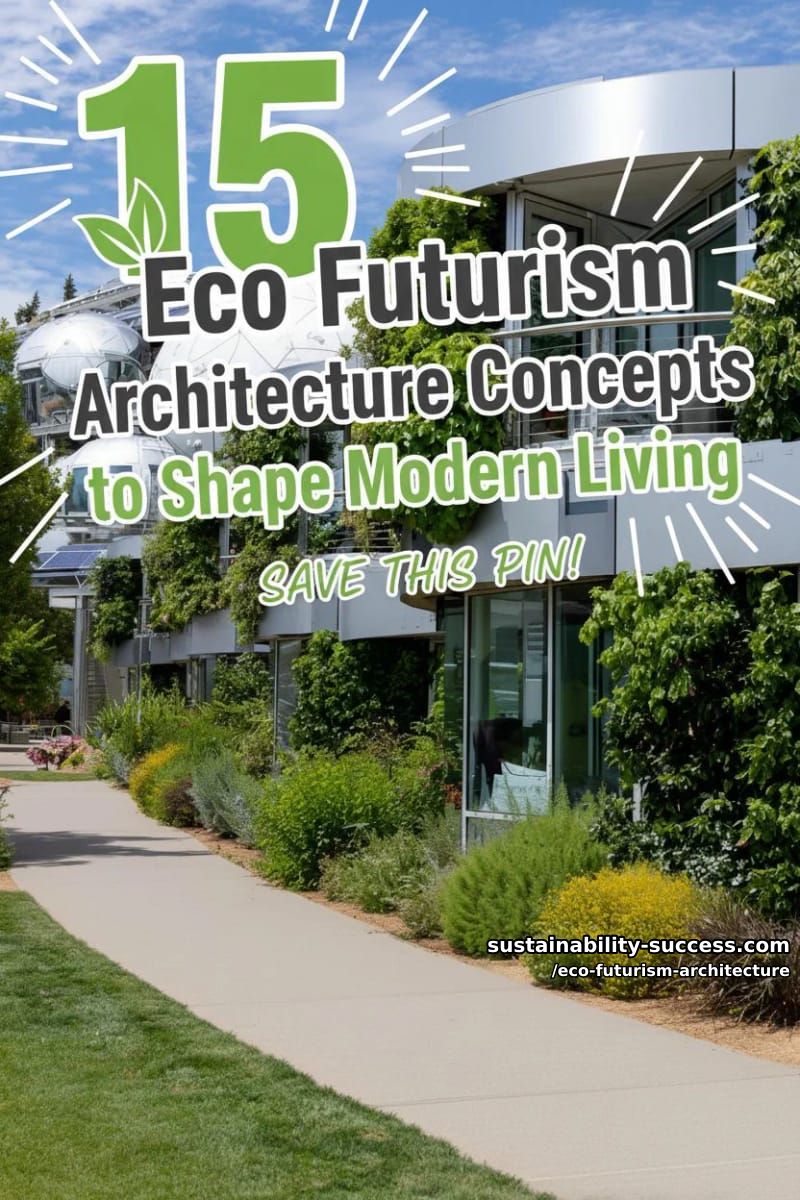Dream of buildings that breathe, cities that shimmer at night, and homes floating gently on water? Eco futurism architecture turns these visions into blueprints. It challenges us to rethink how we live with nature, not just beside it.
Why settle for ordinary when your surroundings can clean the air, feed the community, and spark wonder after sunset? From glowing towers to living bridges, these ideas aren’t science fiction, they’re tomorrow’s neighborhoods.
Let’s see what’s possible when creativity meets responsibility.
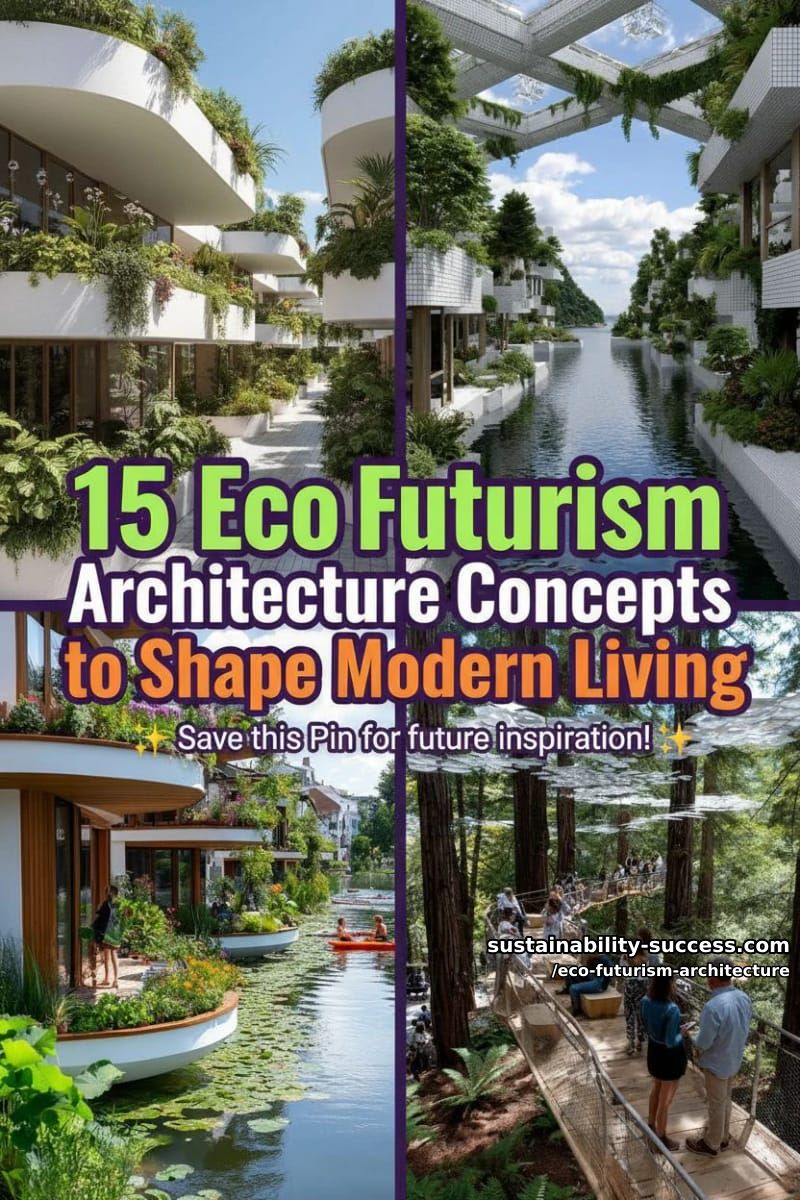
1. Spiral skyscraper forests with vertical gardens and cascading waterfalls on glass façades
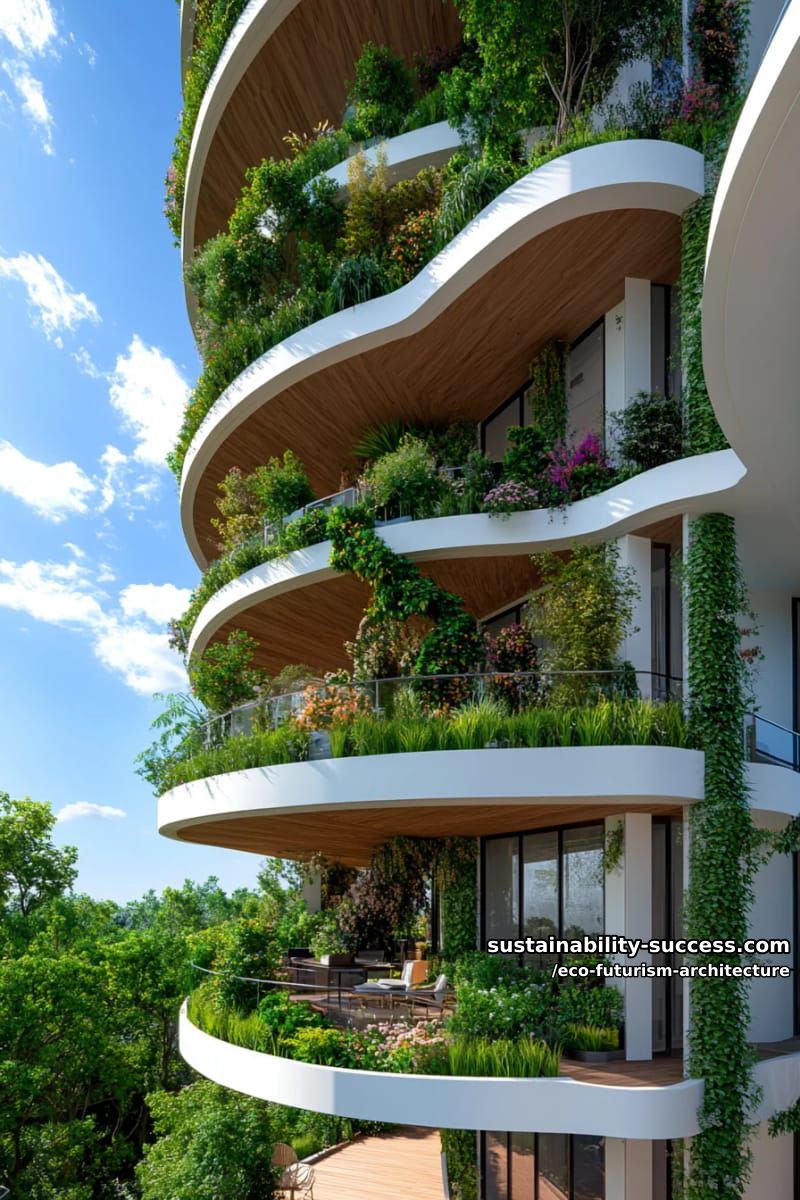
Think skyscrapers as lush vertical forests, where green walls and rooftop parks replace concrete deserts. Imagine waterfalls gliding down glass façades, cooling the air and muffling city noise.
These buildings breathe, filter pollutants, and even provide food. Who wouldn’t want a high-rise that grows lettuce and calms your nerves?
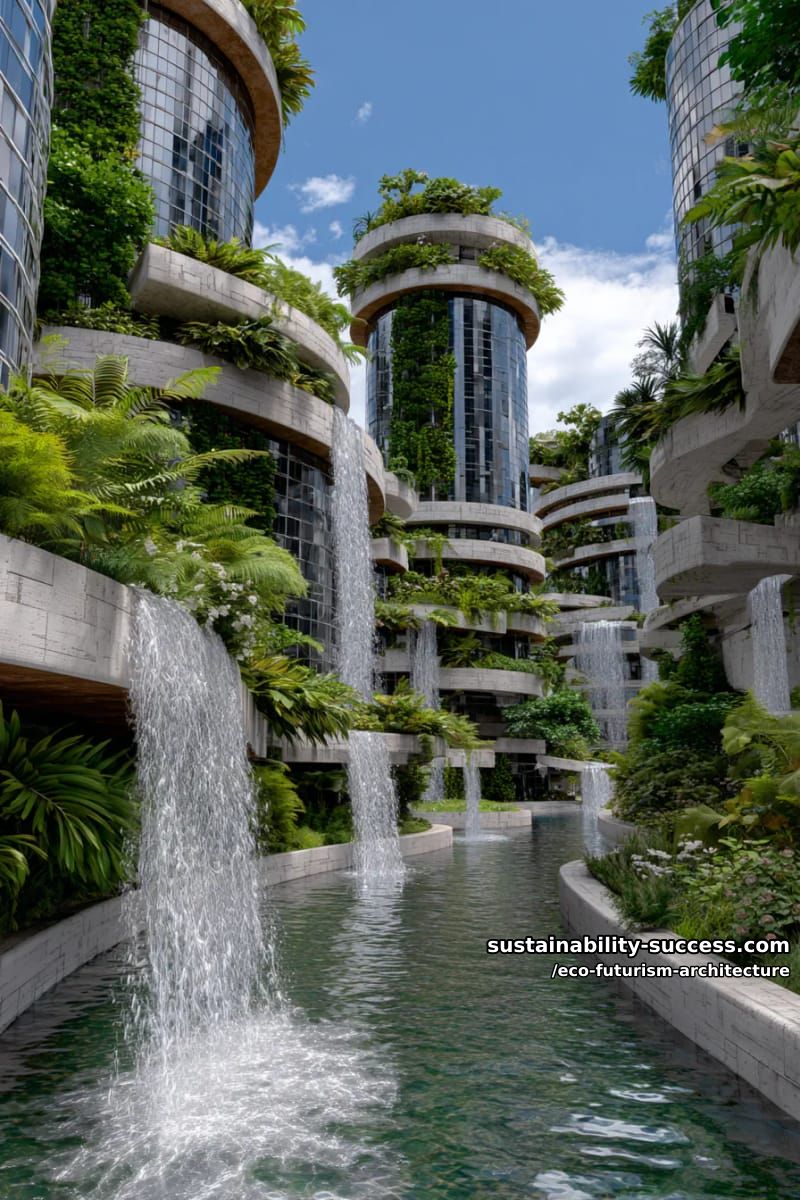
Cascading waterfalls aren’t just for show. They capture rainwater and help regulate temperature naturally. Vertical gardens attract birds and pollinators, making cities less like gray boxes and more like vibrant habitats.
However, maintaining such living structures can be pricey, especially when tech glitches or plant diseases strike. Still, the benefits often speak for themselves.
2. Floating eco-island neighborhoods with solar canopies and lush sky bridges
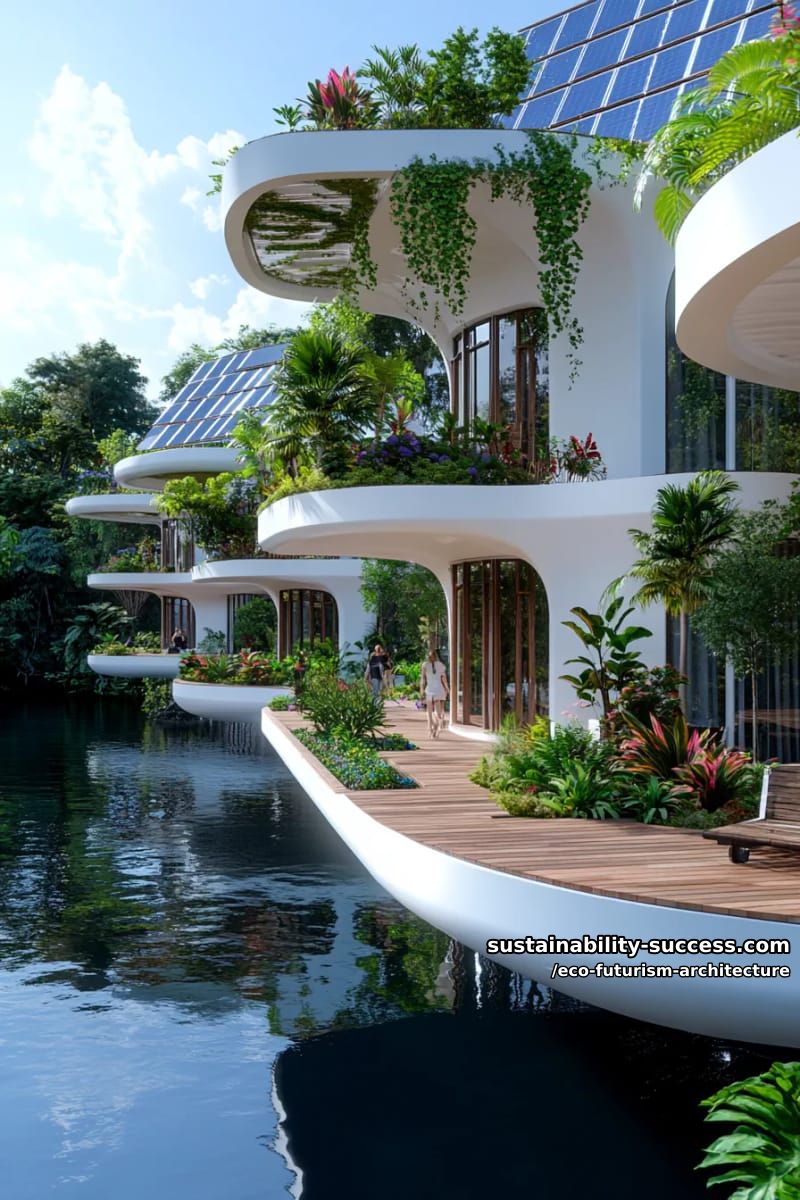
Imagine living on a floating island, where solar canopies soak up sunlight and lush sky bridges connect homes. These neighborhoods combine creative engineering with green living.
Residents get fresh air, stunning water views, and renewable energy. Who wouldn’t want to swap traffic jams for a morning stroll above the waves?
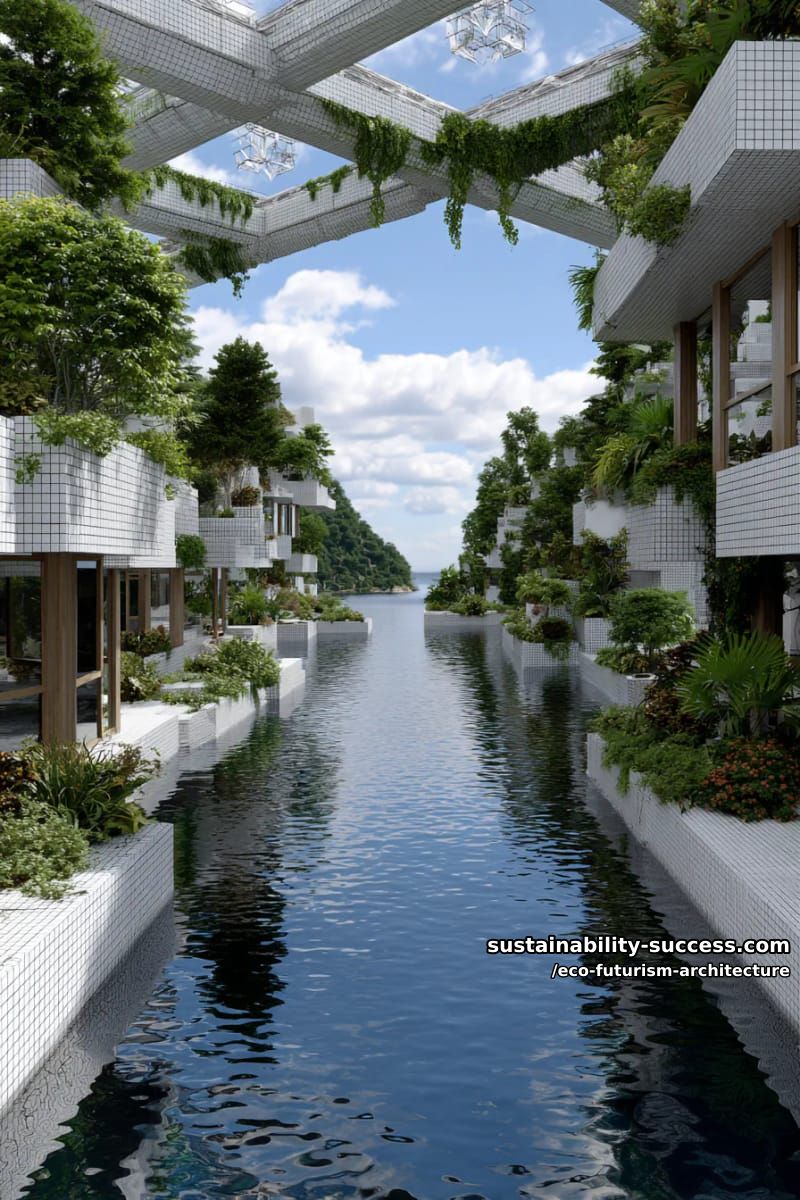
Yet, questions linger. Will these floating islands withstand severe storms? Construction costs may be high, and maintaining plant life over water poses challenges.
Still, this bold idea pushes us to rethink how cities might thrive without taking more land, while still aiming for sustainability and beauty.
3. Bioluminescent mushroom-inspired towers glowing at night in urban parks
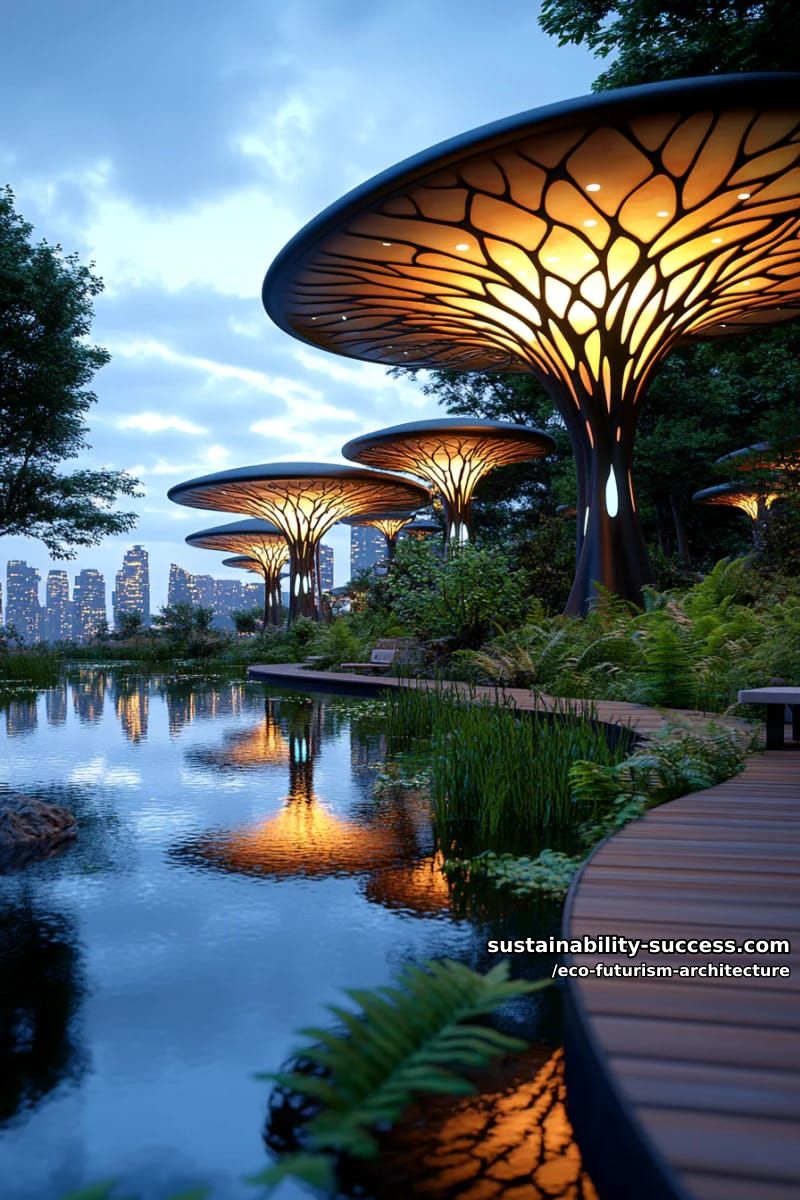
Imagine strolling through a city park at night, greeted by towers glowing softly like otherworldly lanterns.
These structures, inspired by bioluminescent mushrooms, create a magical yet practical atmosphere, providing gentle illumination without harsh streetlights.
Their organic designs blend naturally with green spaces, encouraging visitors to linger and enjoy after sunset.

However, not all is perfect. Integrating living bioluminescent organisms brings maintenance challenges, think humidity, temperature, and the mushrooms' lifespan.
Yet, their low energy use and enchanting visuals make these towers a conversation starter, combining environmental responsibility with a touch of whimsy for urban life.
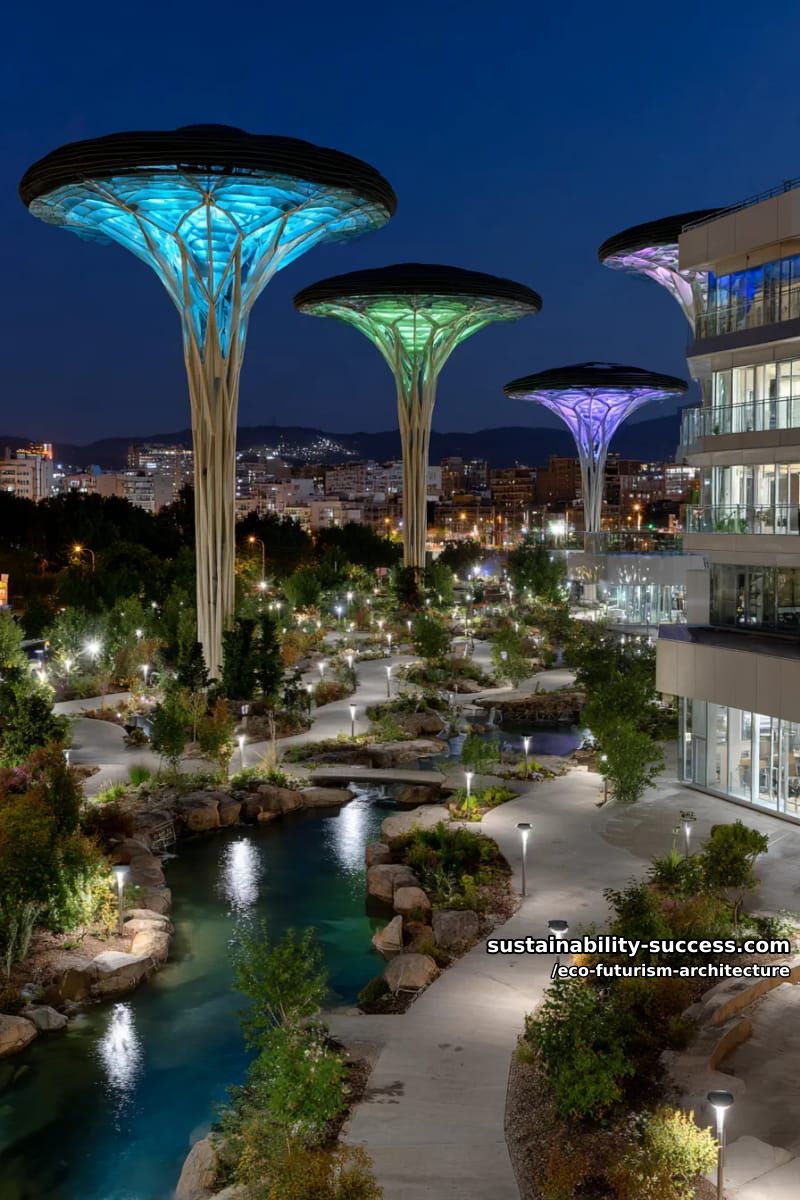
4. Dome-shaped community hubs wrapped in living moss and wildflower walls
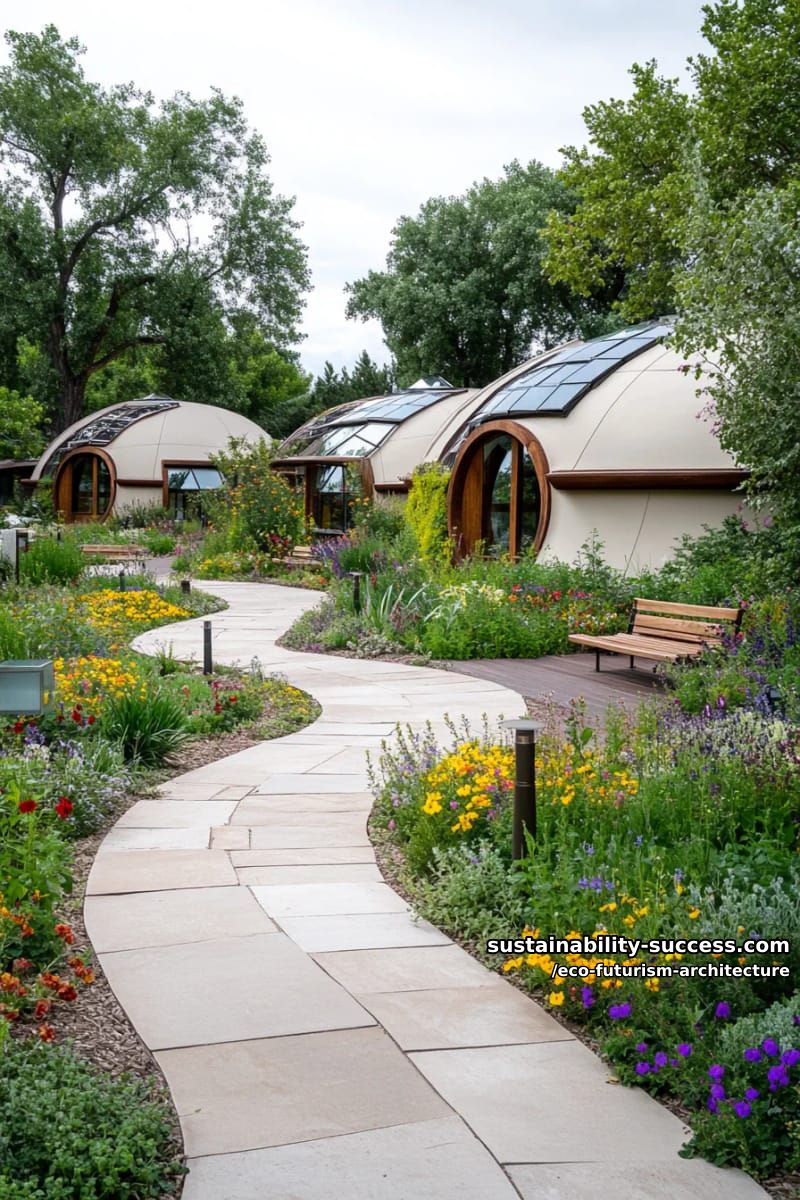
Imagine community spaces shaped like domes, wrapped in lush moss and buzzing wildflower walls. These structures act as natural air filters, lowering urban heat and supporting pollinators.
You get cleaner air and a calm retreat, all while slashing energy bills. Isn’t that a breath of fresh air?

Still, some might wonder about upkeep. Living walls need regular care, watering, trimming, pest checks. Yet, with smart irrigation and community volunteers, maintenance is no longer a headache. The benefits easily outweigh the hassle.
Who wouldn’t want their local hub looking, and smelling, this good?
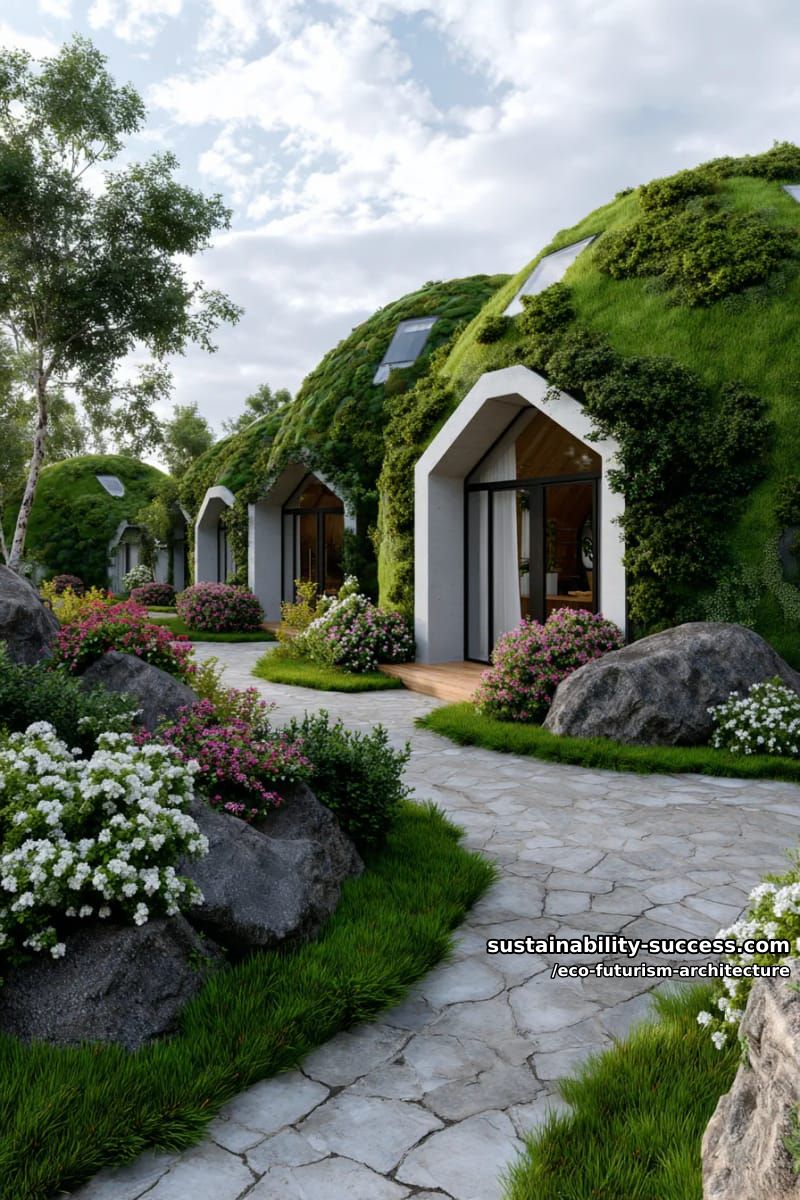
5. Treehouse cityscapes interconnected by transparent elevated walkways above rivers
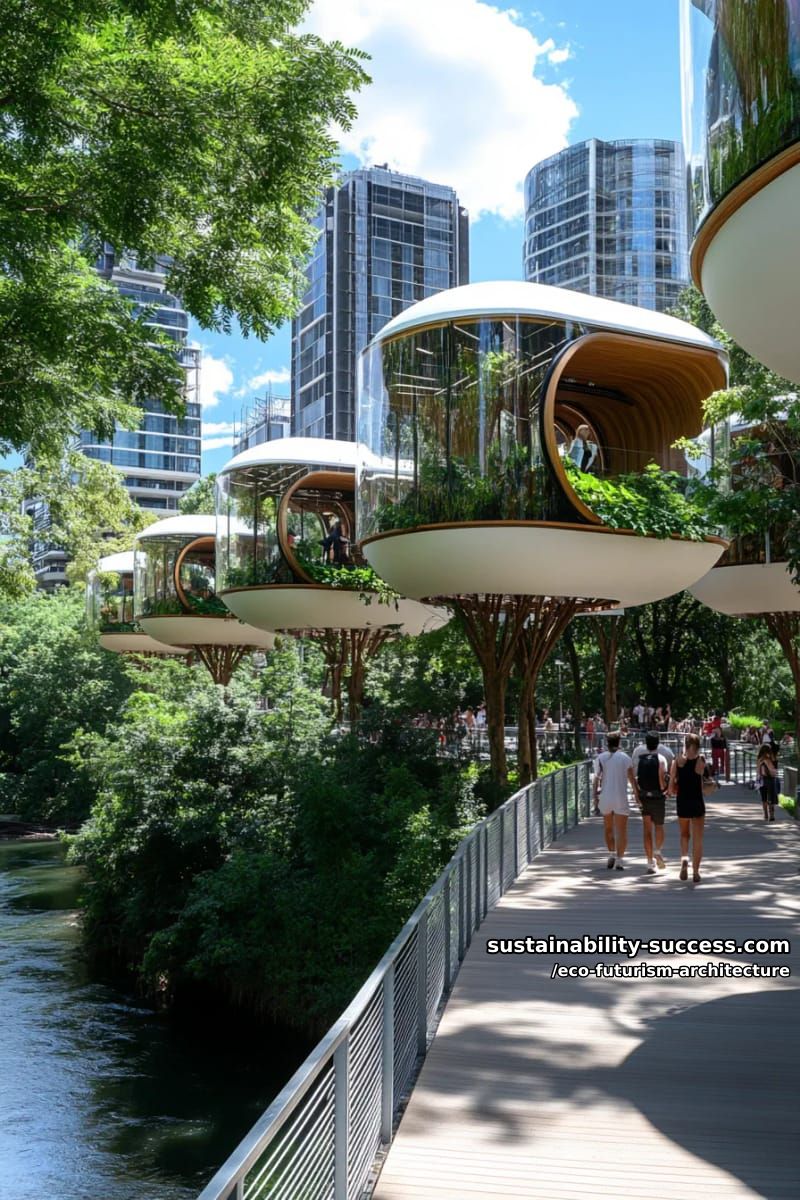
Imagine waking up in a treetop home, sunlight filtering through leaves, and stepping onto a transparent walkway suspended above a sparkling river.
These cityscapes blend human living with nature, offering stunning views and a sense of calm. Elevated paths reduce ground-level disruption and support thriving ecosystems below.

Of course, building glass walkways and treehouse networks isn’t cheap. Materials must withstand weather and heavy use, and maintenance demands creative solutions.
Despite these challenges, the payoff is immense: cleaner air, less noise, and a daily connection to natural beauty. Wouldn’t you rather commute with the birds than the traffic?

6. Futuristic riverfront villages with amphibious architecture and floating green terraces
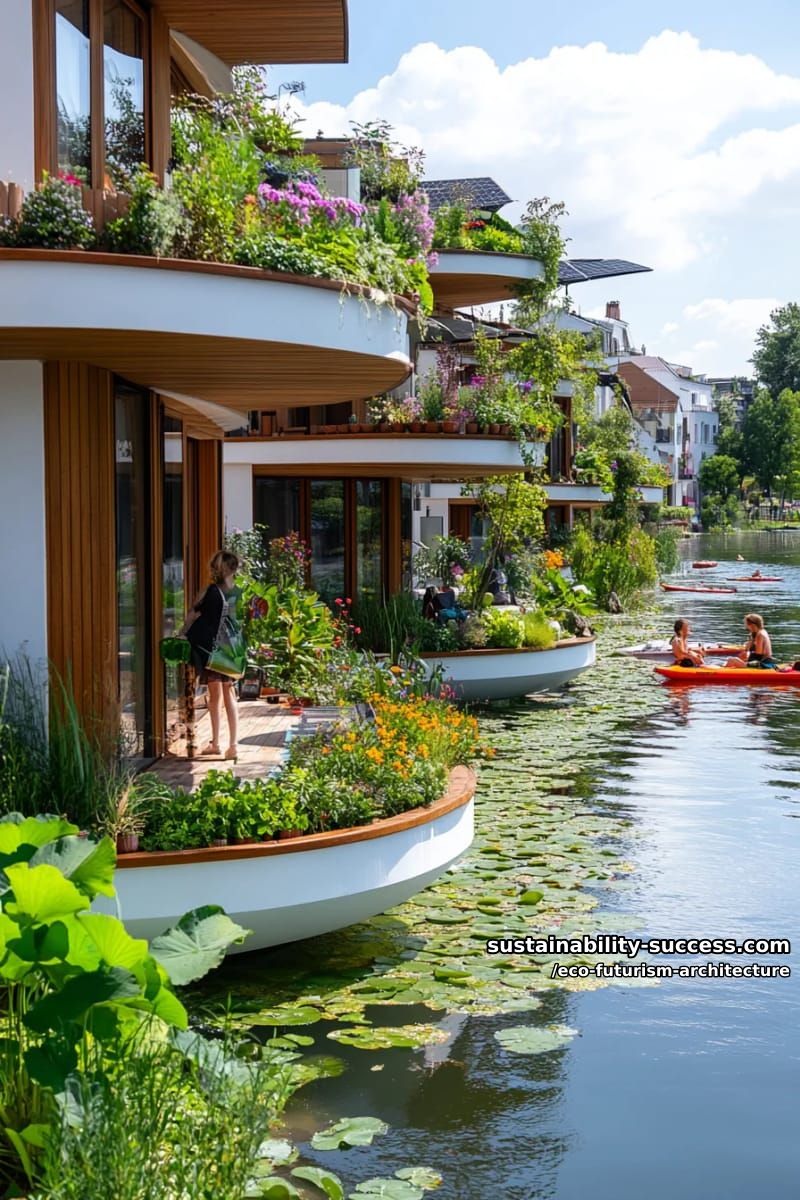
Imagine living in a village where homes gently rise with the river tides, thanks to amphibious foundations. Floating green terraces hug the water’s edge, offering lush gardens above and below the surface.
Rainwater collection and solar panels keep these communities self-sufficient, while fish dart beneath your living room window.
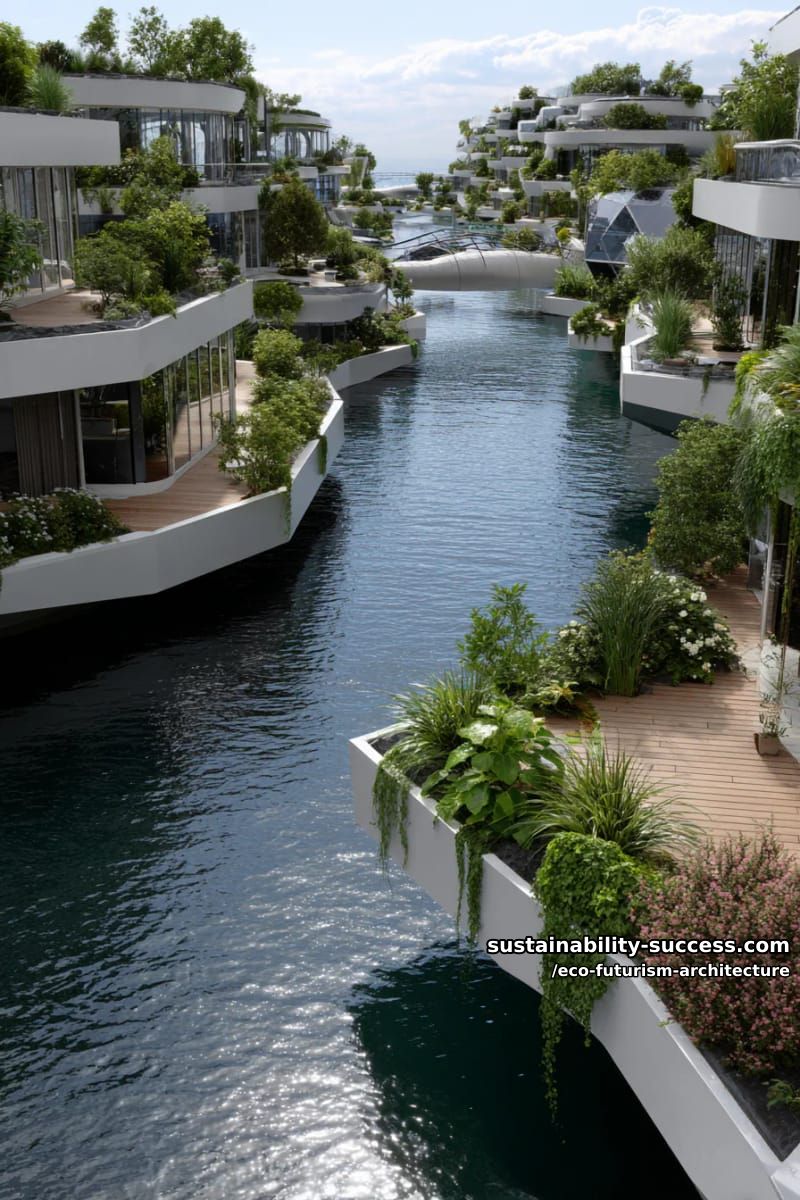
However, constructing these floating habitats isn’t all smooth sailing. Building costs remain high, and local ecosystems can be delicate. Still, the blend of innovation and sustainability here is hard to ignore.
Wouldn’t you love to sip coffee on a terrace that floats with the sunrise?
7. Solar petal pavilions that open and close like organic flowers for energy
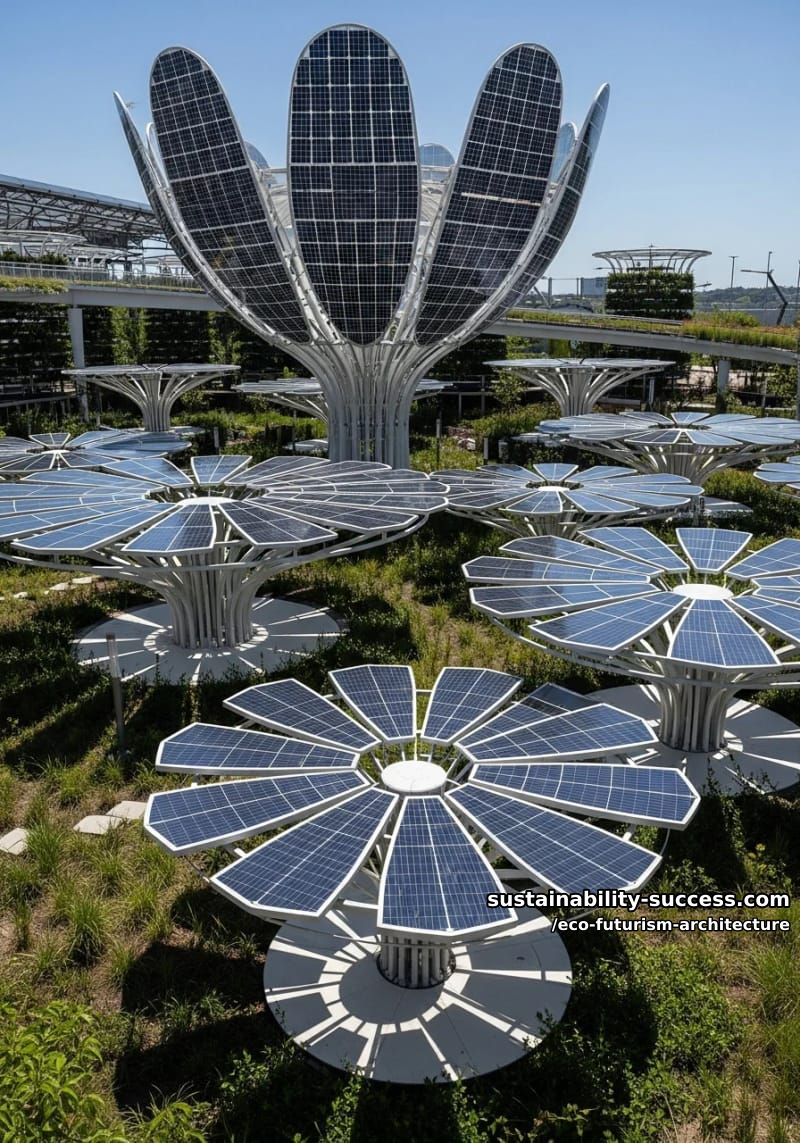
Imagine a pavilion that mimics a sunflower, opening its panels in the morning to absorb sunlight, then closing at dusk. Solar petal pavilions do just that.
Their movement isn’t just for show, this dynamic design maximizes energy capture while providing shade, merging technology and nature in a practical dance.
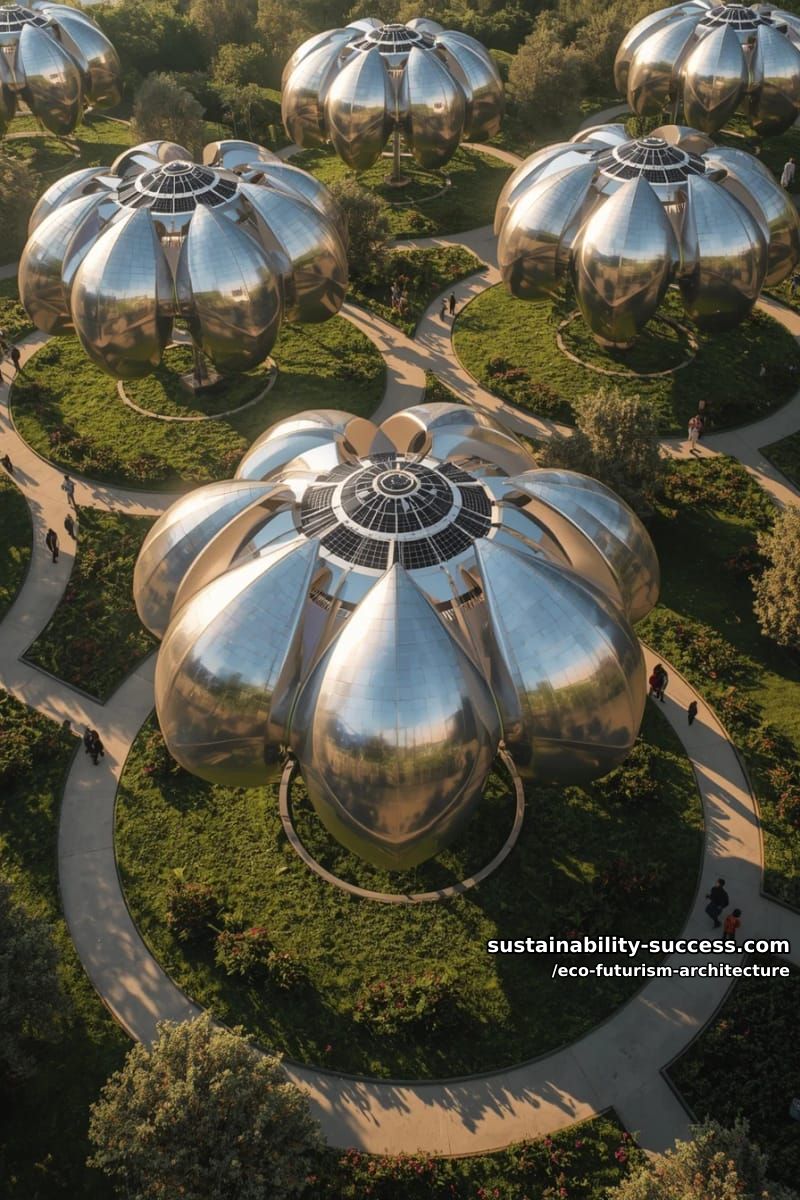
While these structures impress with their efficiency and visual appeal, they aren’t perfect. The mechanics can be costly and demand regular upkeep.
Yet, the blend of automation and organic inspiration makes them a conversation starter, one that could nudge architects everywhere to rethink how public spaces generate their own power.
8. Mountain cliffside dwellings carved into rock, veiled in hanging gardens
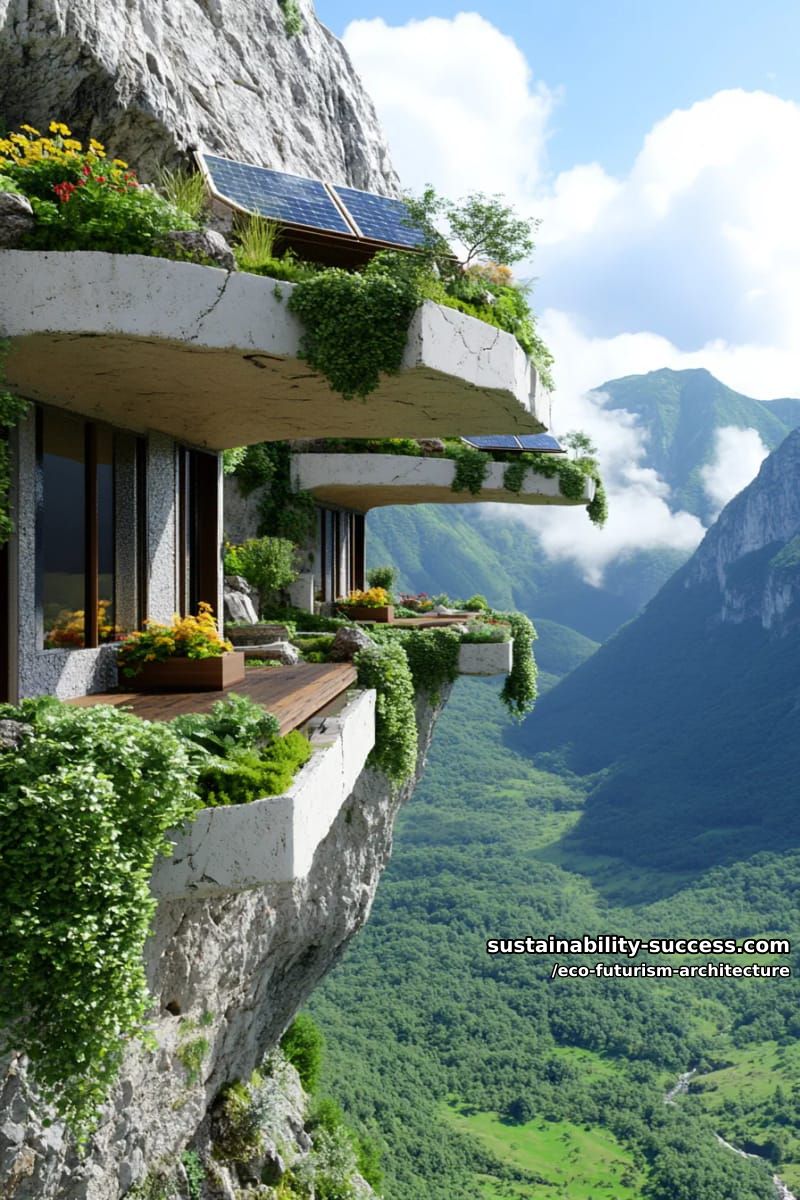
Imagine homes chiseled into sheer cliffs, their stone facades hidden by cascades of greenery. These dwellings blend human ingenuity with nature. Hanging gardens aren’t just decoration, they cool interiors naturally and filter air.
Residents get privacy, jaw-dropping views, and a connection to ancient ways of living, all in one package.
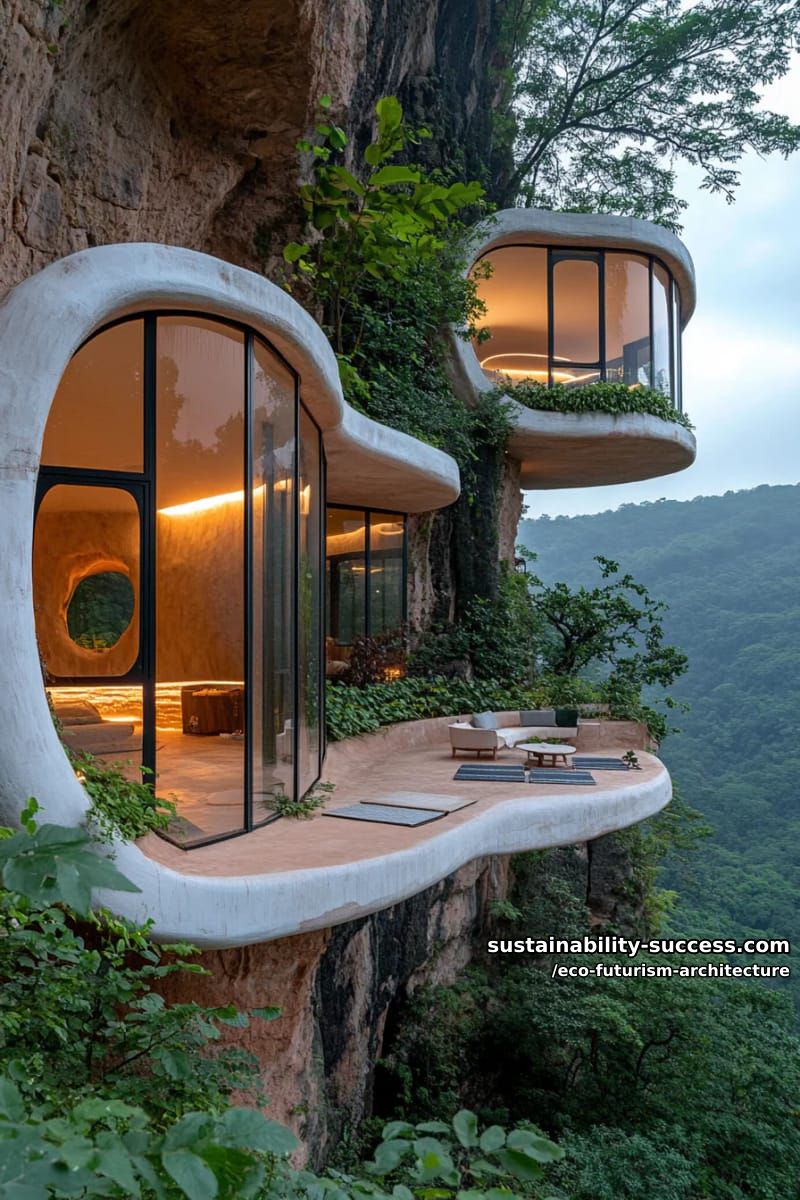
But let’s be honest, carving into rock isn’t a walk in the park. Construction costs can skyrocket, and access for maintenance poses headaches.
Still, the environmental benefits and breathtaking appearance make such homes a striking example of eco futurism, sparking inspiration for architects and dreamers alike.
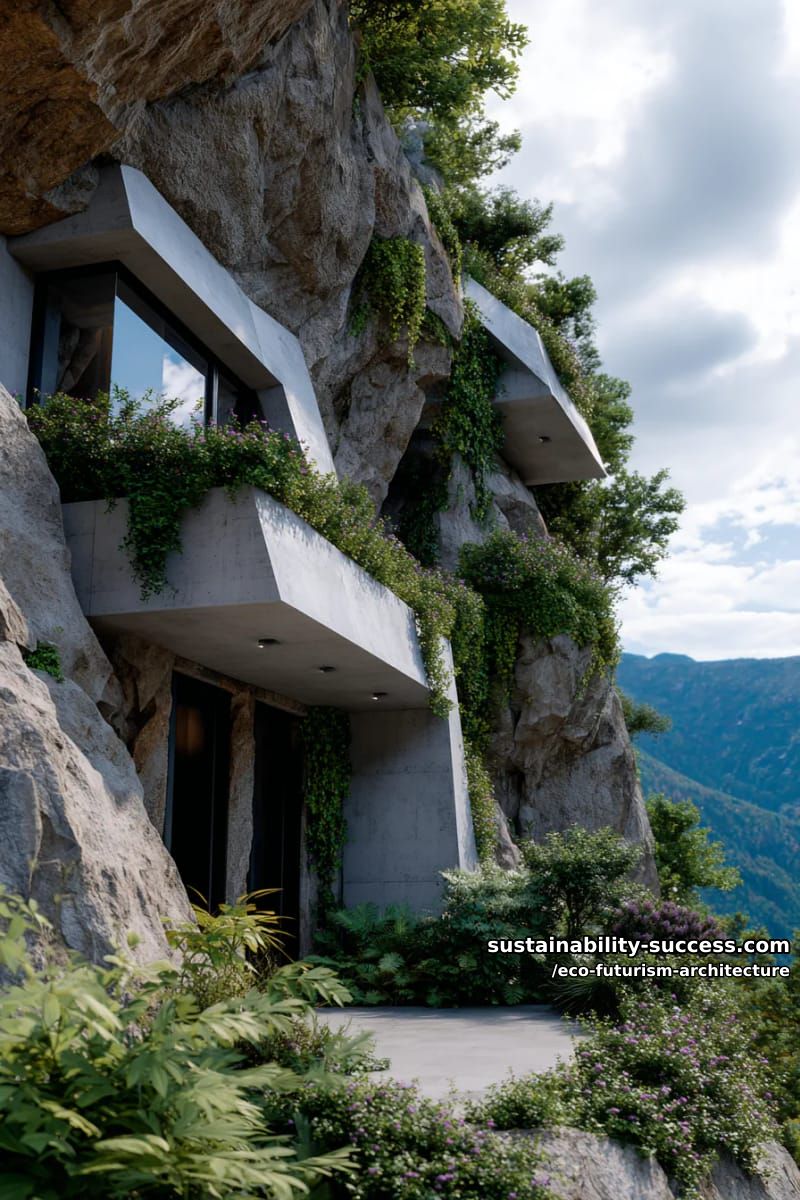
9. Urban jungles merging bamboo latticework with reflective water features and sky pools
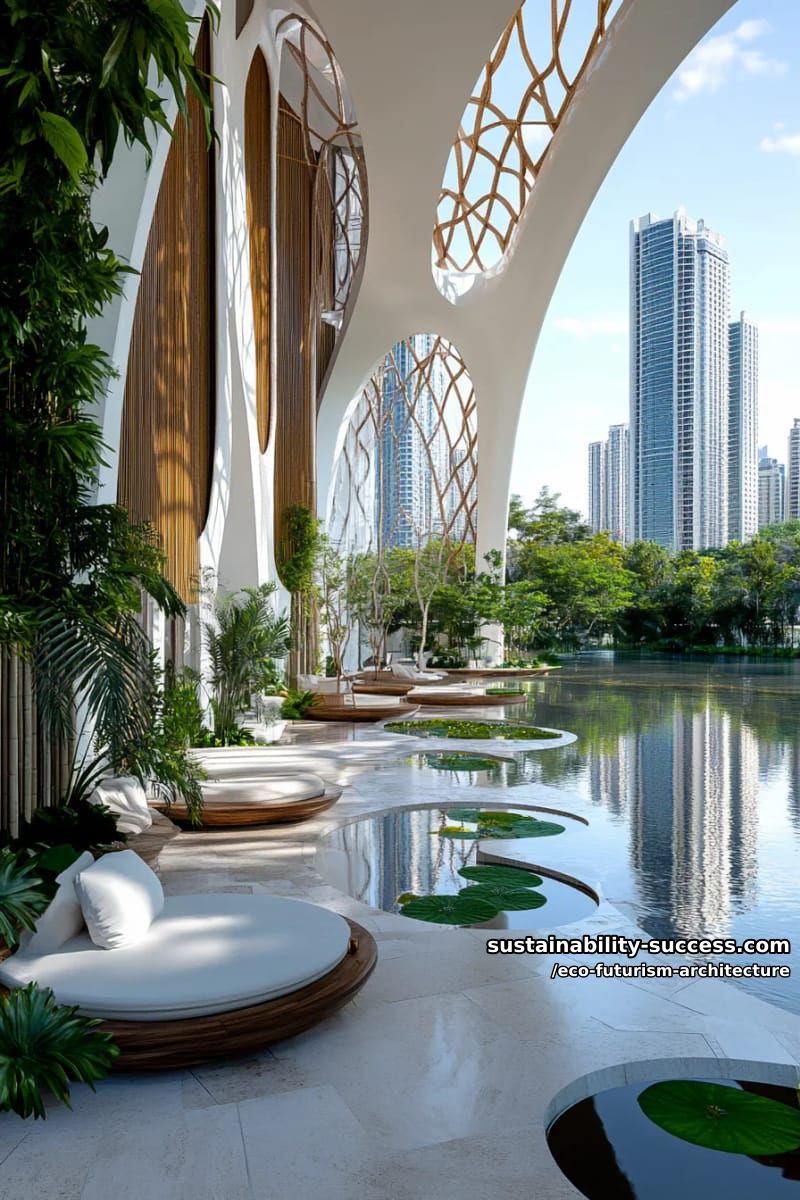
Urban jungles are sprouting up with bamboo latticework intertwined above shimmering water features. These designs don’t just look appealing, they create cooler microclimates and boost biodiversity.
Imagine relaxing in a building where sky pools mirror the skyline, blending sustainable materials with smart luxury. It’s practical beauty, not empty spectacle.
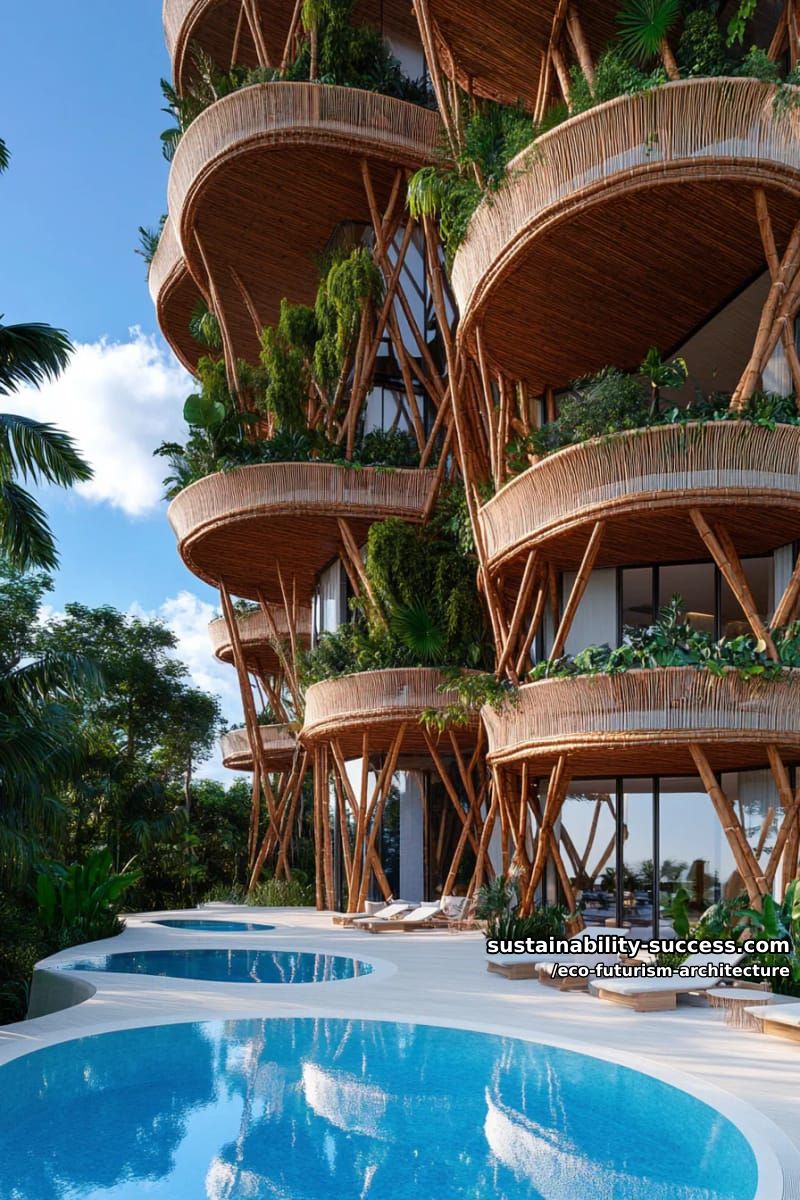
However, such innovation faces real hurdles. Bamboo requires careful treatment to last in humid cities. Sky pools need maintenance and strict safety checks.
Still, when architects get it right, these spaces inspire and support greener city living. Wouldn’t you rather swim above the noise than sweat on the street below?
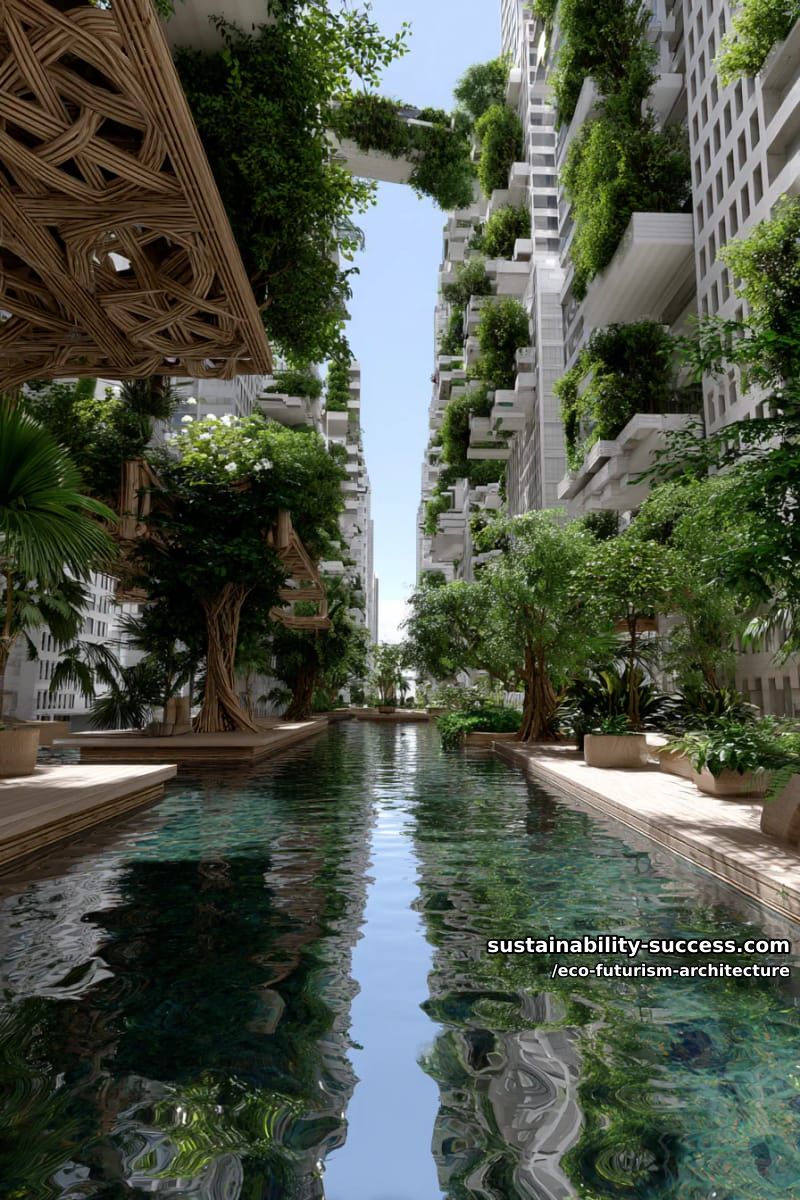
10. Rotating pod homes covered in edible plants and rainwater harvesting domes
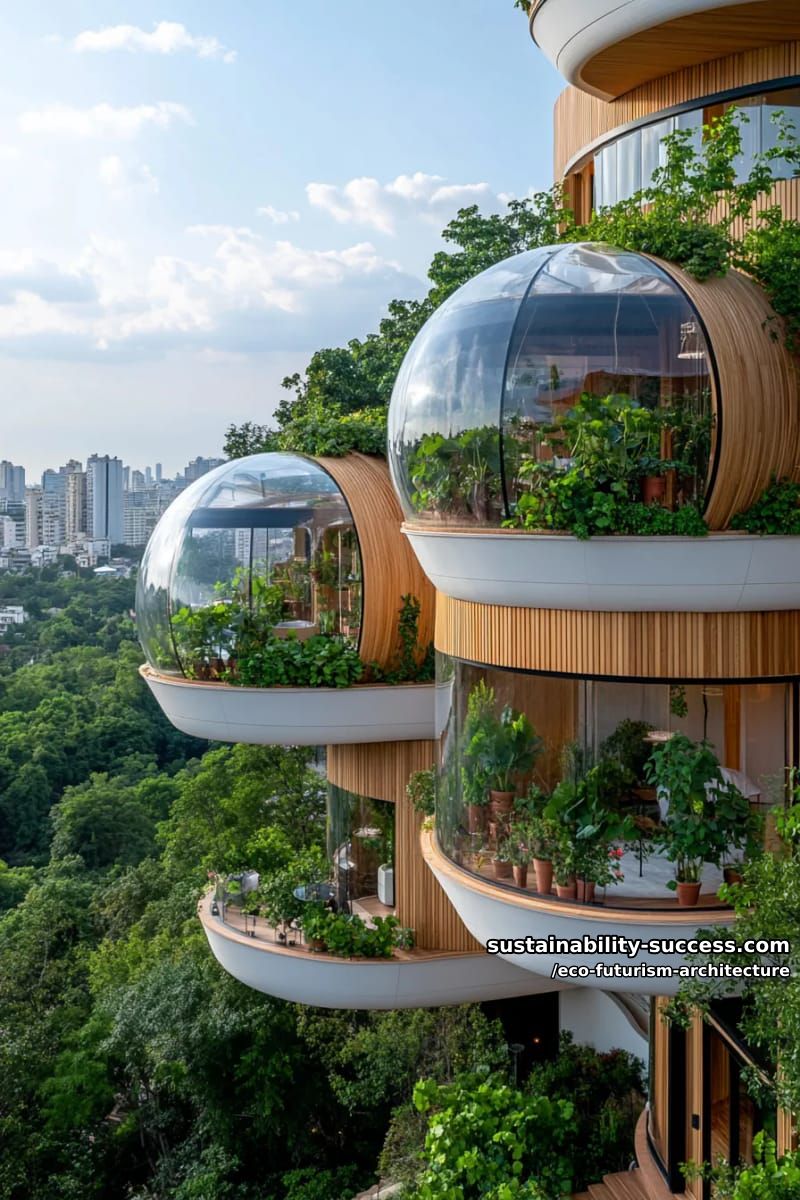
Imagine waking up in a home that spins gently to catch the sunrise, while your walls sprout strawberries and basil.
Rotating pod homes push eco futurism from concept to reality, blending smart technology with food production. These pods use movement and design to optimize sunlight, growth, and energy efficiency.
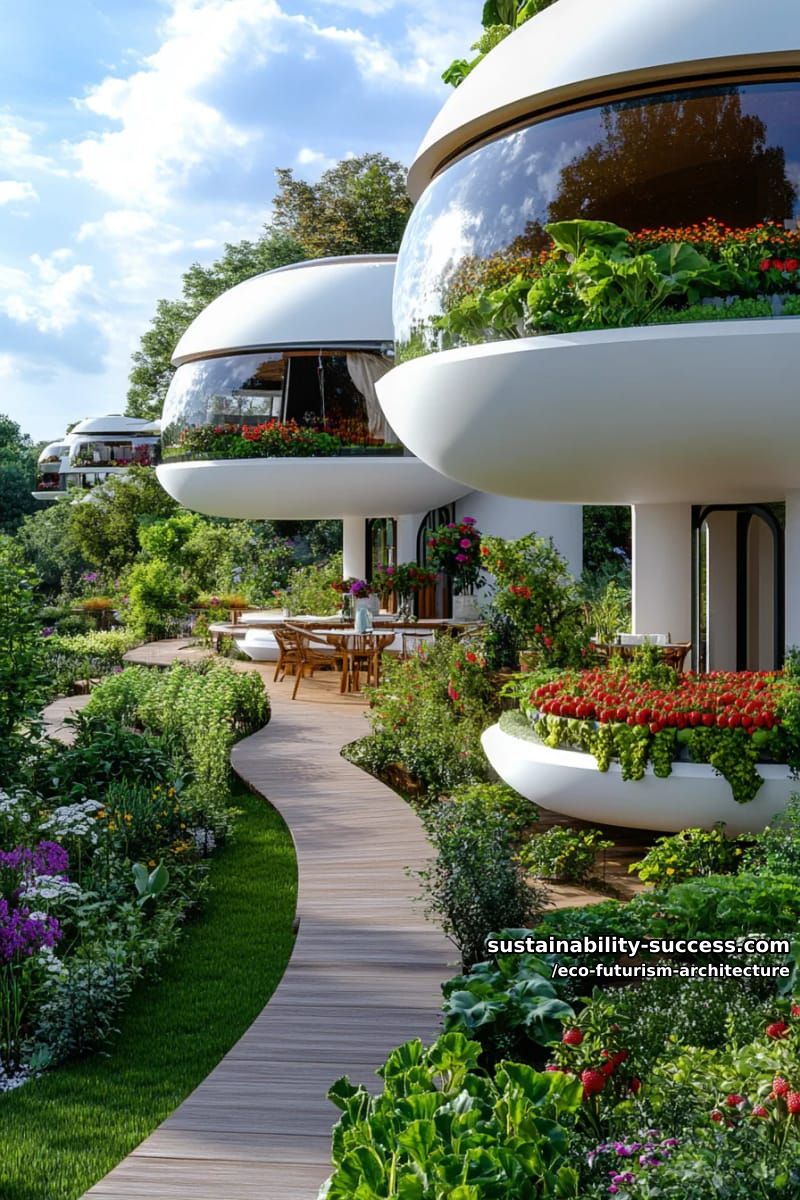
Rainwater harvesting domes are no mere novelty. They collect, filter, and store water with minimal fuss, cutting household reliance on municipal supplies.
Sure, initial setup can cost a pretty penny, but the long-term savings and environmental gains often tip the scales. Who wouldn’t want a salad ceiling and a water bill that shrinks?

11. Underwater eco-cities with bubble-like living spaces and coral-inspired structures

Imagine underwater eco-cities where bubble-shaped homes float gently among coral-inspired towers. These designs mimic nature, blending human comfort with marine habitats.
Residents might watch fish glide past their windows, while solar and tidal energy power daily life. It’s sustainable living, but with a front-row seat to ocean wonders.

Of course, building beneath the waves isn’t all smooth sailing. Saltwater corrosion and high-pressure environments challenge even the brightest engineers. Residents must adapt to limited sunlight and occasional noisy sea life.
Still, the promise of merging architecture with ocean ecosystems could change our thinking about city living forever.
12. Urban farms spiraling up inside translucent towers with drone-pollinated orchards
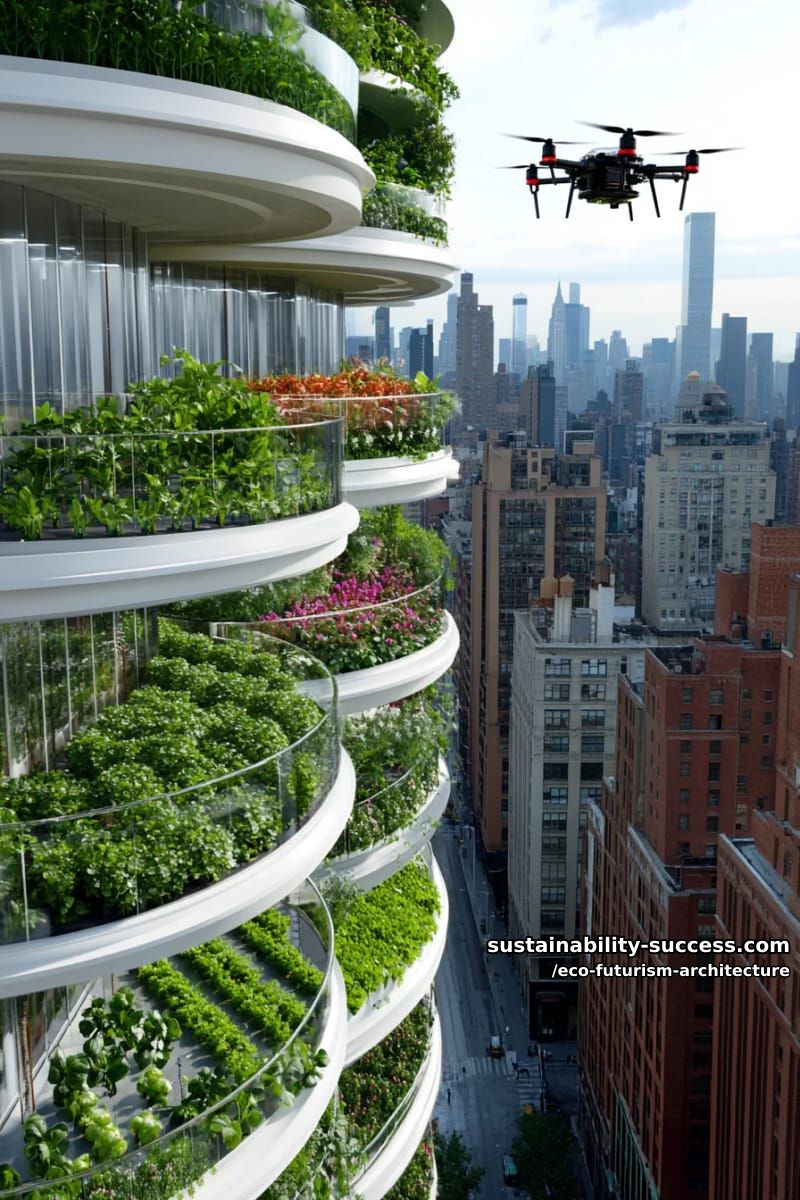
Imagine translucent towers rising above city blocks, their spiraling gardens visible from every street. Rows of crops climb skyward, maximizing yield per square meter.
Drones buzz gently, pollinating fruit trees where bees can’t easily reach. These urban farms turn concrete jungles into productive green spaces, bringing agriculture back to city dwellers.
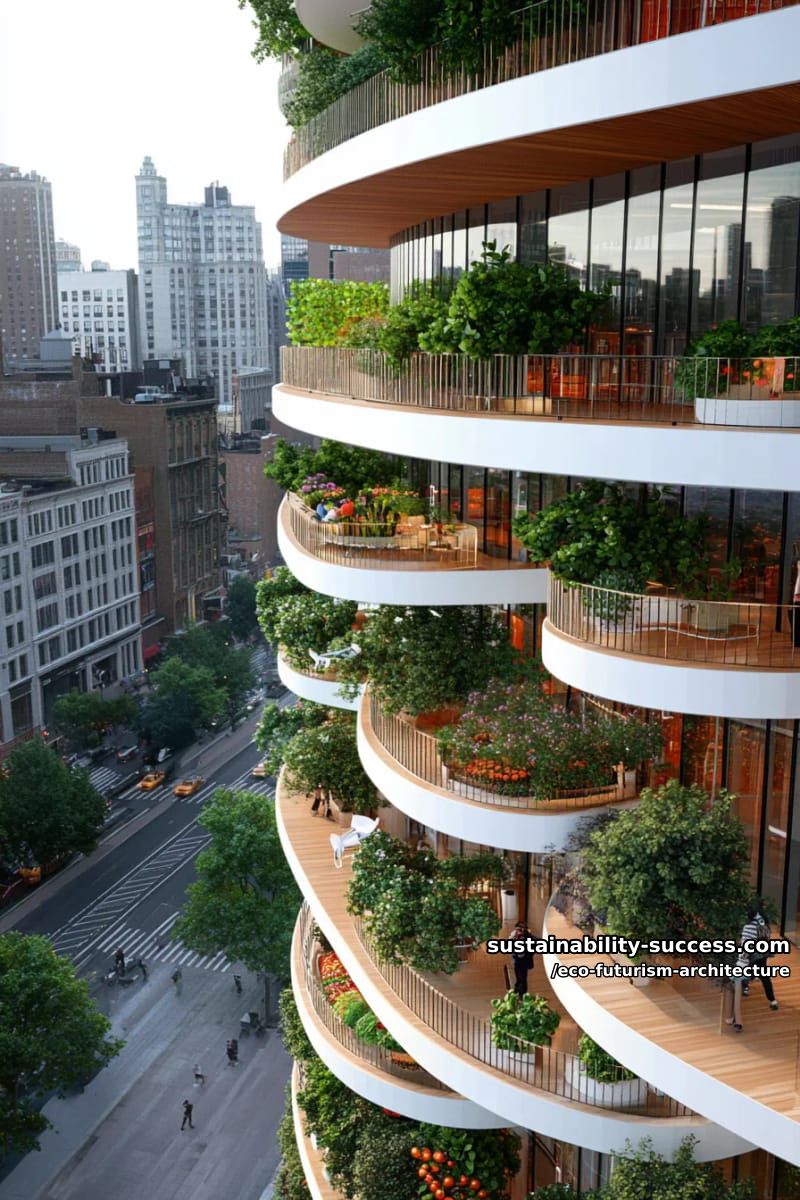
While drone pollination and vertical farming offer fresher food and shrink transportation emissions, upkeep isn’t always cheap. Energy demands for lighting and climate control can be steep.
However, the promise of year-round harvests and improved food security keeps innovators tweaking the formula, making these sky-high orchards more feasible each year.
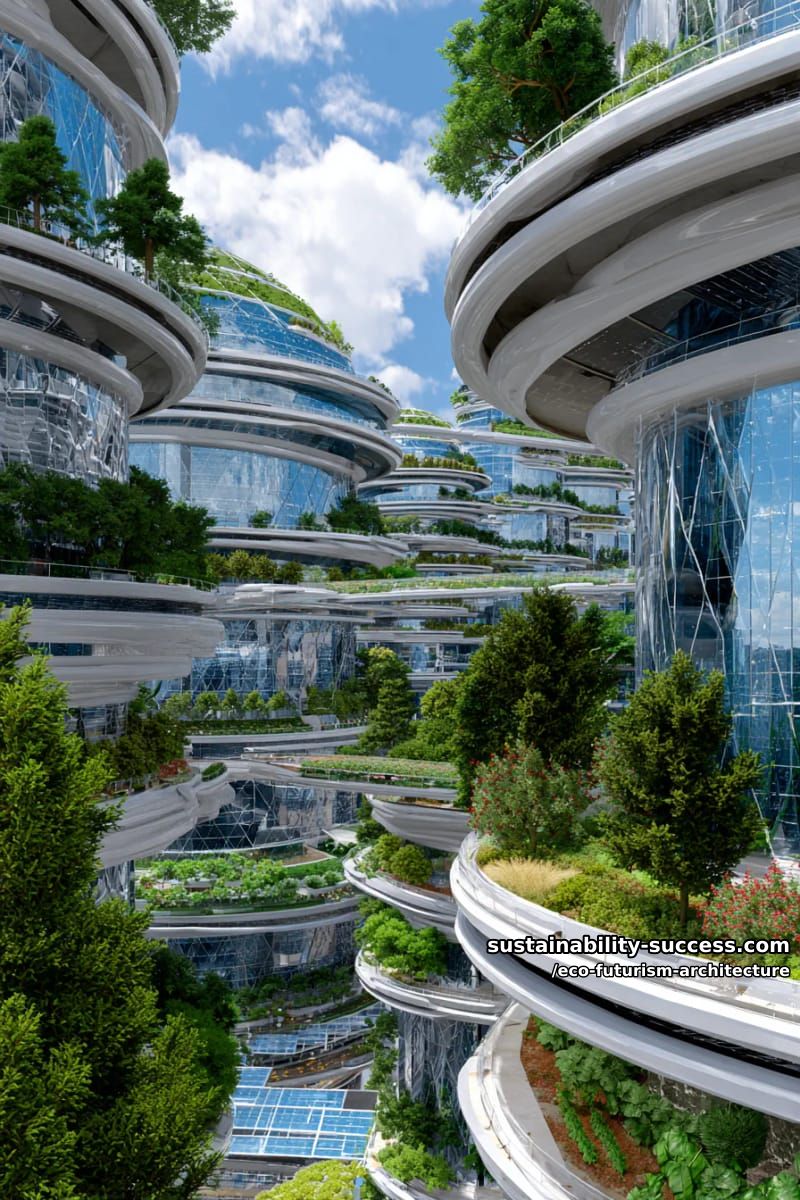
13. Sky plaza amphitheaters surrounded by spiraling green ramps and kinetic wind sculptures
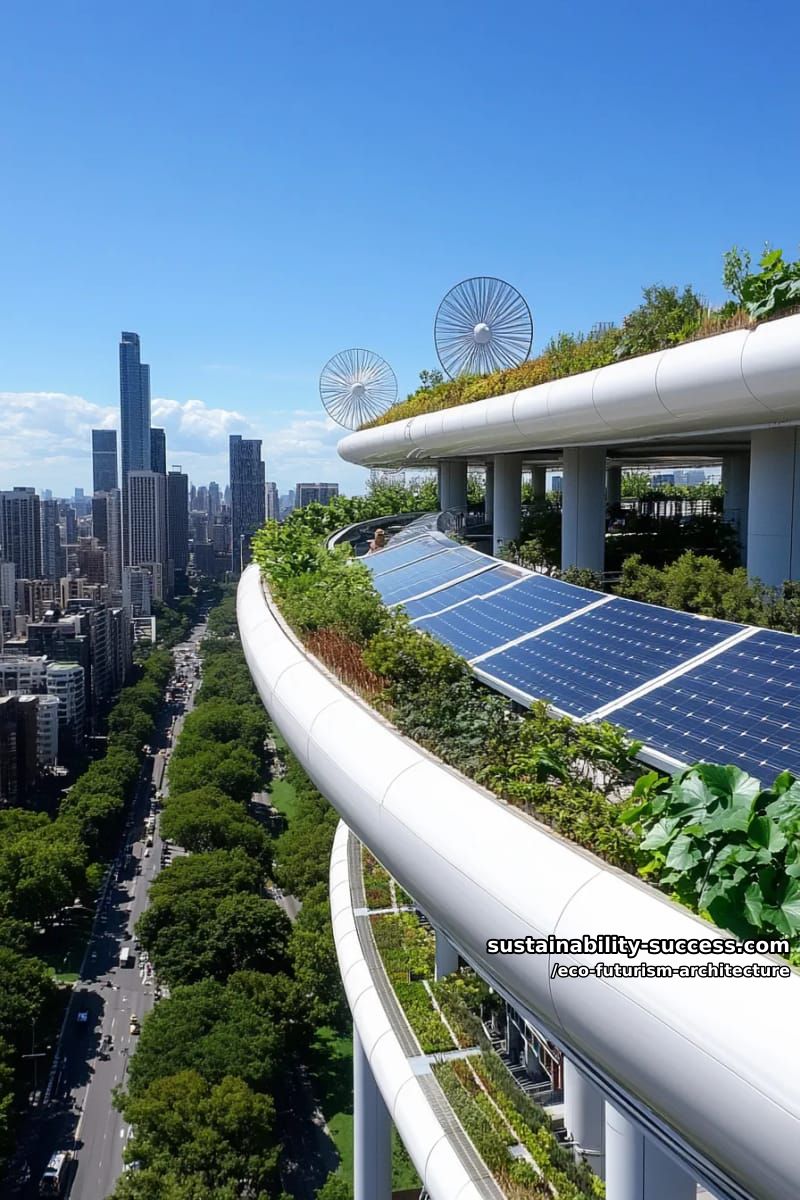
Imagine stepping onto a sky plaza where amphitheaters rise, surrounded by green ramps swirling upward like a living spiral staircase.
These ramps aren’t just for show, they support native plants, cool the air, and invite people to wander, relax, or even picnic above the city’s chaos.

Kinetic wind sculptures spin gently overhead, turning breezes into moving art. Their presence reminds us that renewable energy can look beautiful. Yet, maintenance costs and wind variability can challenge designers.
Still, these plazas offer a glimpse of how sustainability and public life might blend seamlessly in future cities.
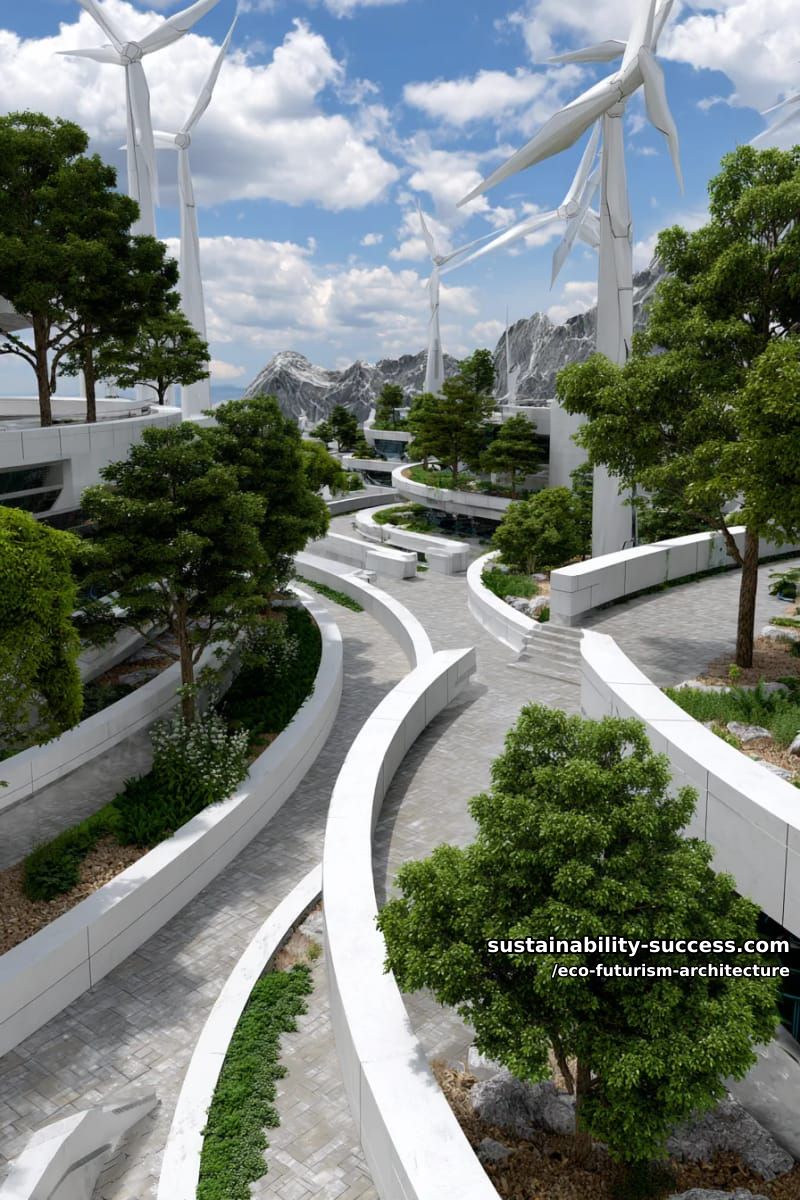
14. Forest canopies transformed into community gathering spaces with light-filtering solar leaves
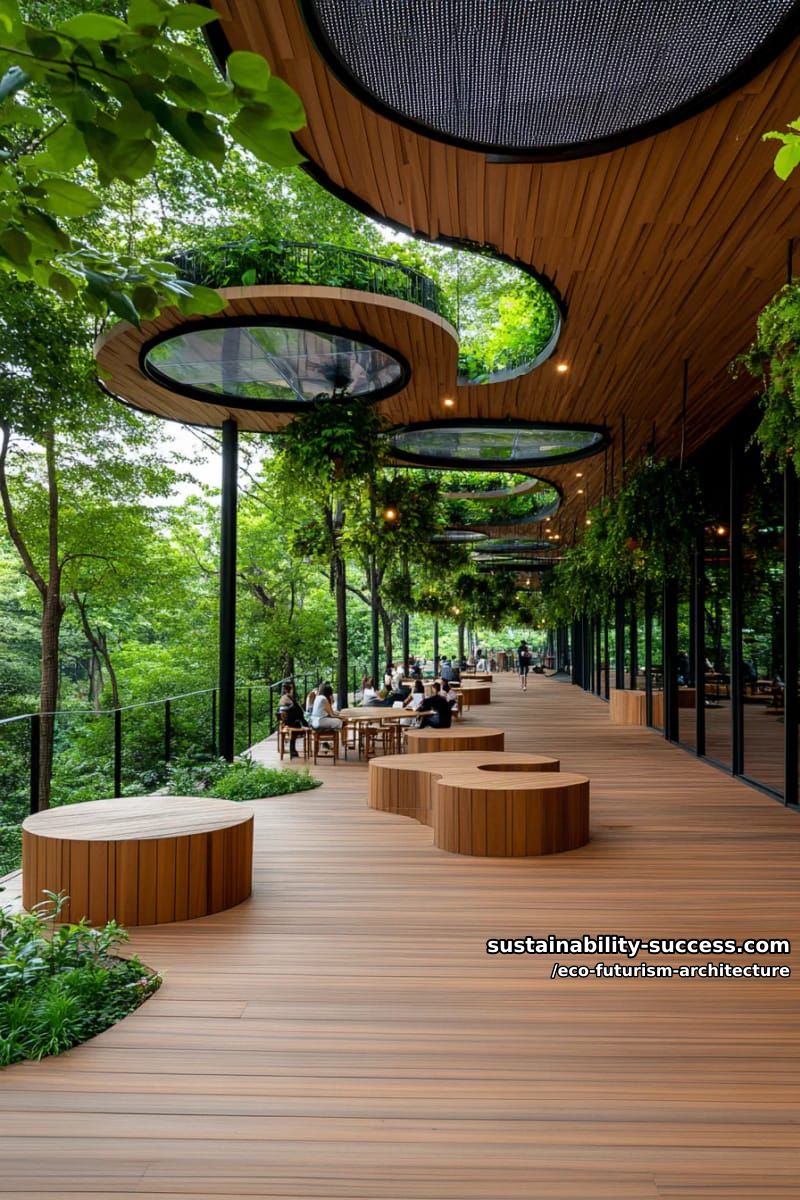
Imagine walking beneath a living roof where solar leaves filter sunlight, casting dappled patterns while silently generating power. Tree canopies become natural meeting spots, blending comfort with technology.
Children play under these green umbrellas, while neighbors chat at benches powered by the sun. The result? Beauty, function, and community thrive together.

Of course, integrating such technology isn’t always a walk in the park. Maintenance and cost can trip up even the most enthusiastic planners.
Yet, the payoff, clean energy and vibrant public spaces, often outweighs these challenges. Isn’t it time our parks pulled double duty for both people and the planet?
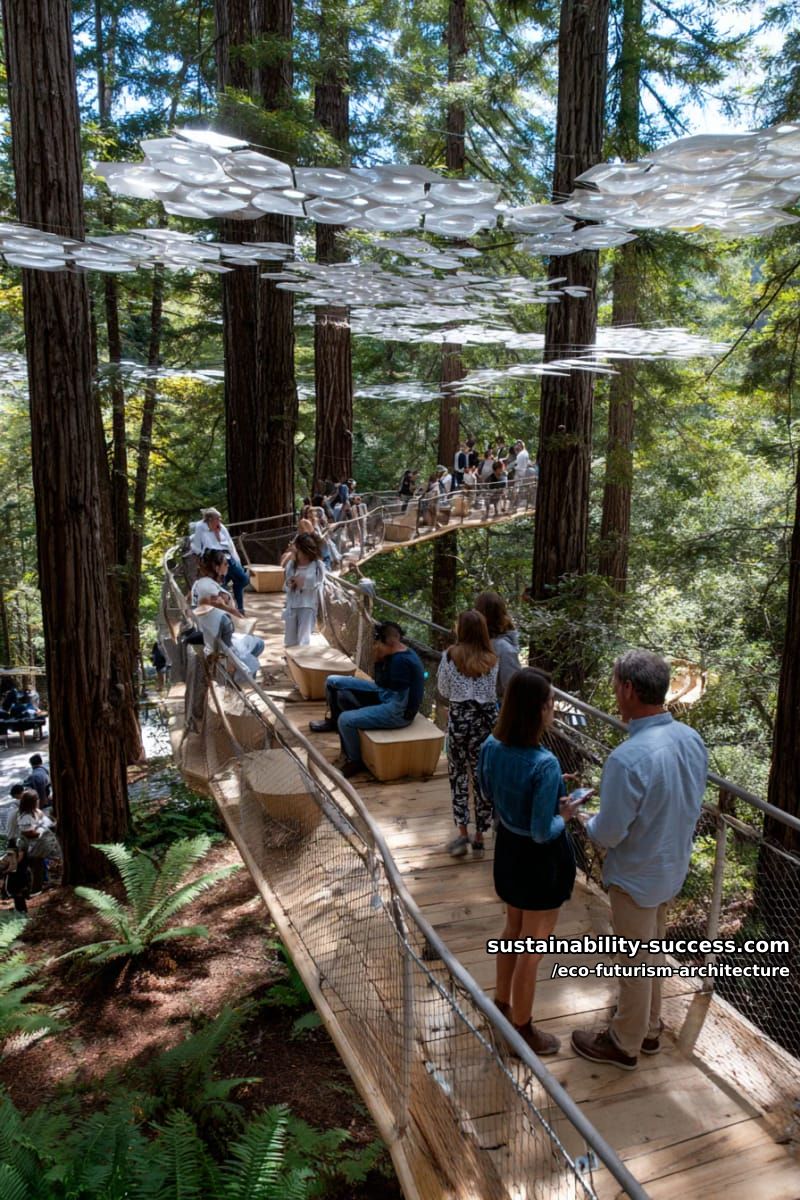
15. Hydroponic bridges connecting biophilic skyscrapers across crystal-clear blue canals

Imagine walking across a bridge lined with thriving lettuce, mint, and strawberries. Hydroponic gardens transform these connectors between skyscrapers into both food sources and living art.
These bridges do more than just link buildings, they recharge city air and offer daily access to nature. Commuting becomes a stroll through a greenhouse.
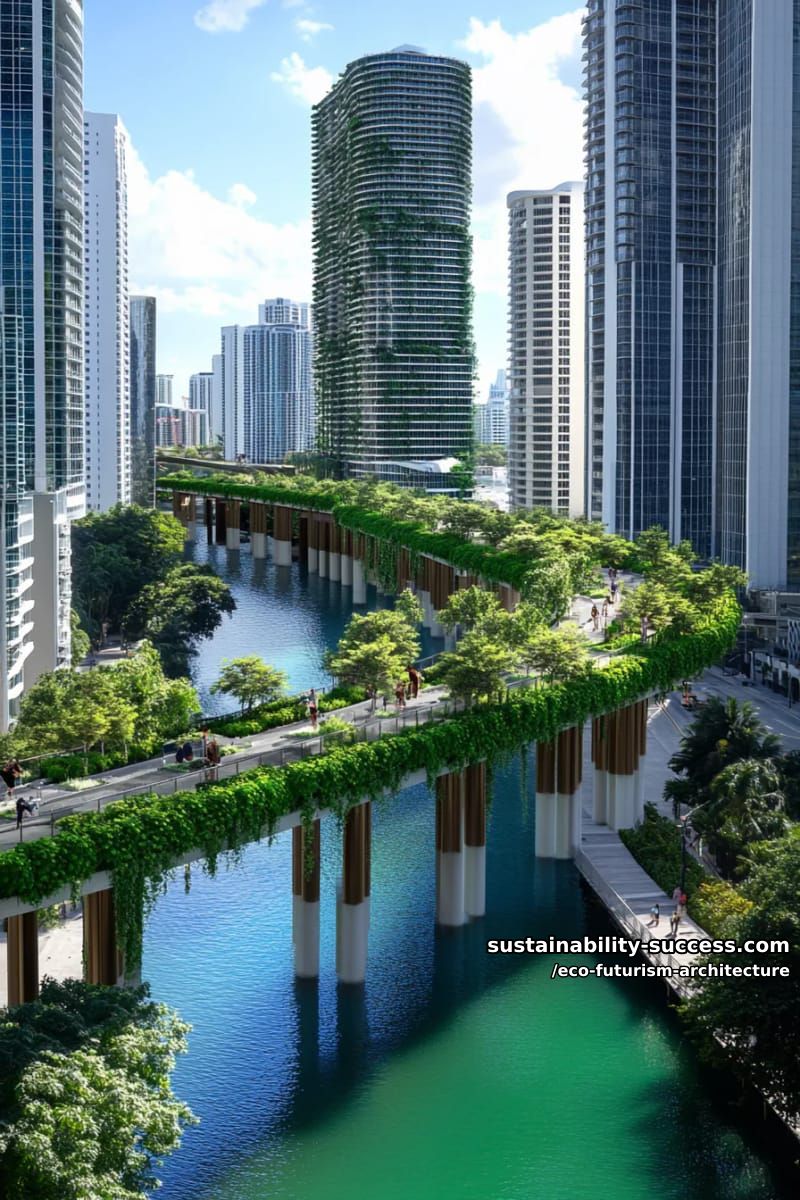
Yet, maintaining such lush passageways isn’t simple. Water systems require constant care to prevent algae or leaks. Still, the benefits, fresh produce, cleaner air, and stress relief, often tip the scales.
Isn’t turning urban infrastructure into edible, beautiful spaces a smart move for future cities?
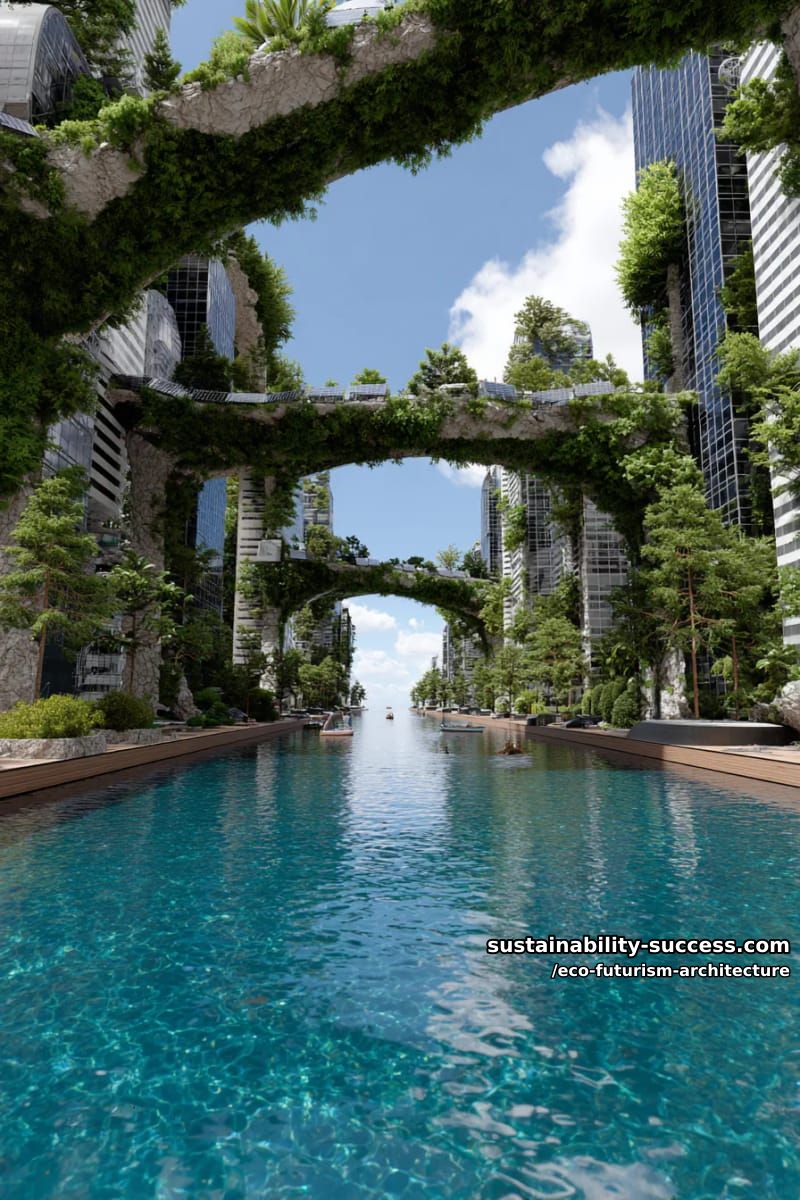
Conclusion
Eco futurism architecture is more than just a vision; it’s a blueprint for sustainable living. Imagine children playing in sky gardens or neighbors meeting on solar-lit bridges. These ideas aren’t science fiction, they’re practical solutions to real-world challenges.
What’s stopping us from embracing these innovations? Start small. Support green building projects in your city. Share these concepts with friends. Every action plants a seed for a cleaner, brighter future.
Ready to help shape tomorrow’s cities? The green revolution is already knocking at your door.
Related Posts
- Organic Architecture Concept Ideas
- Biophilic Interior Design
- Sustainable Urban Design
- Sustainable Housing
- Green Technology Examples


